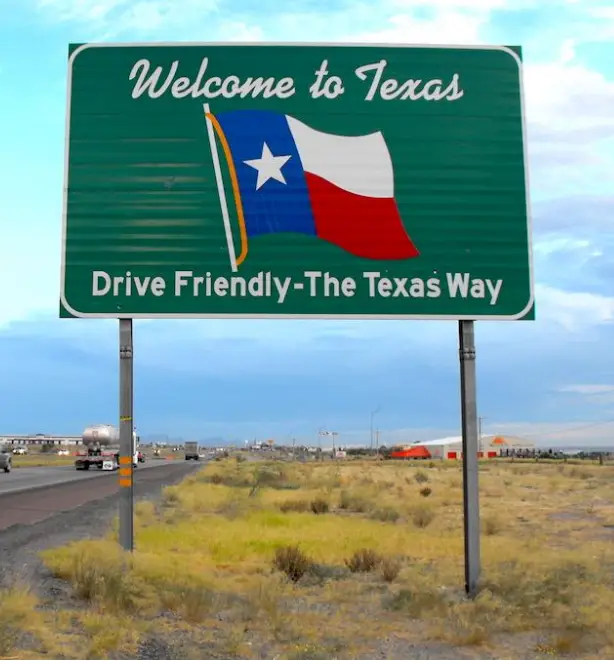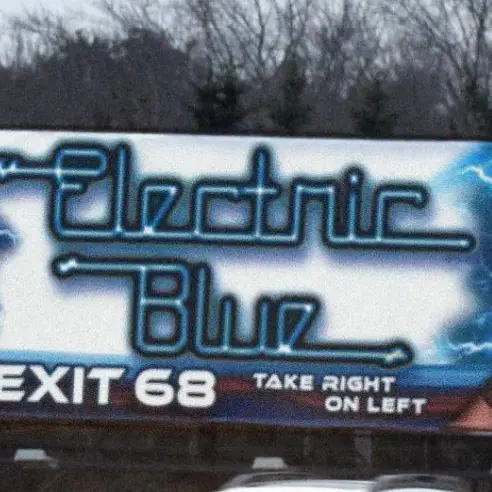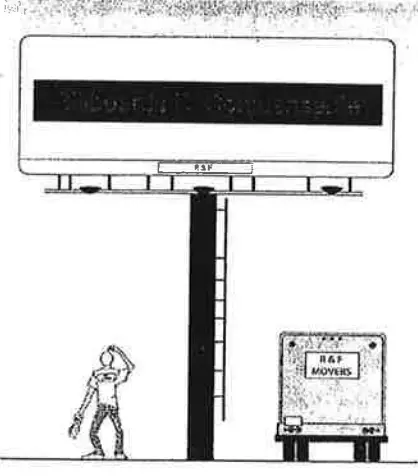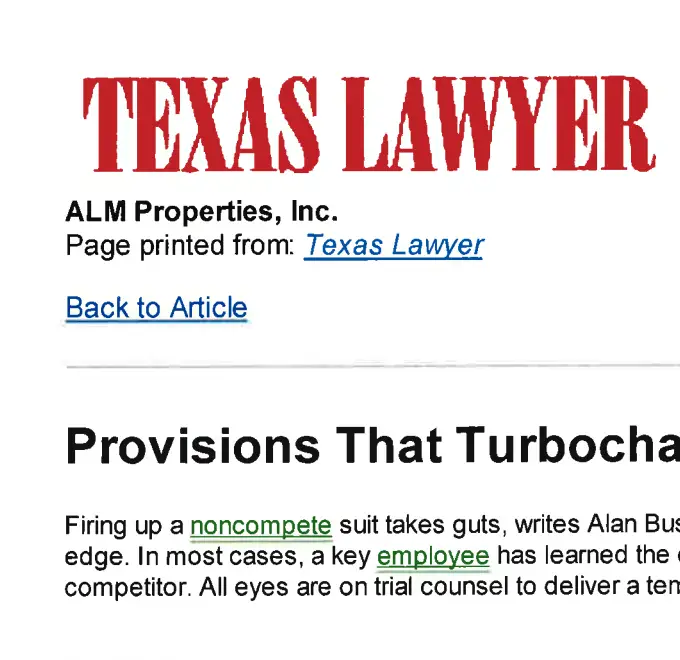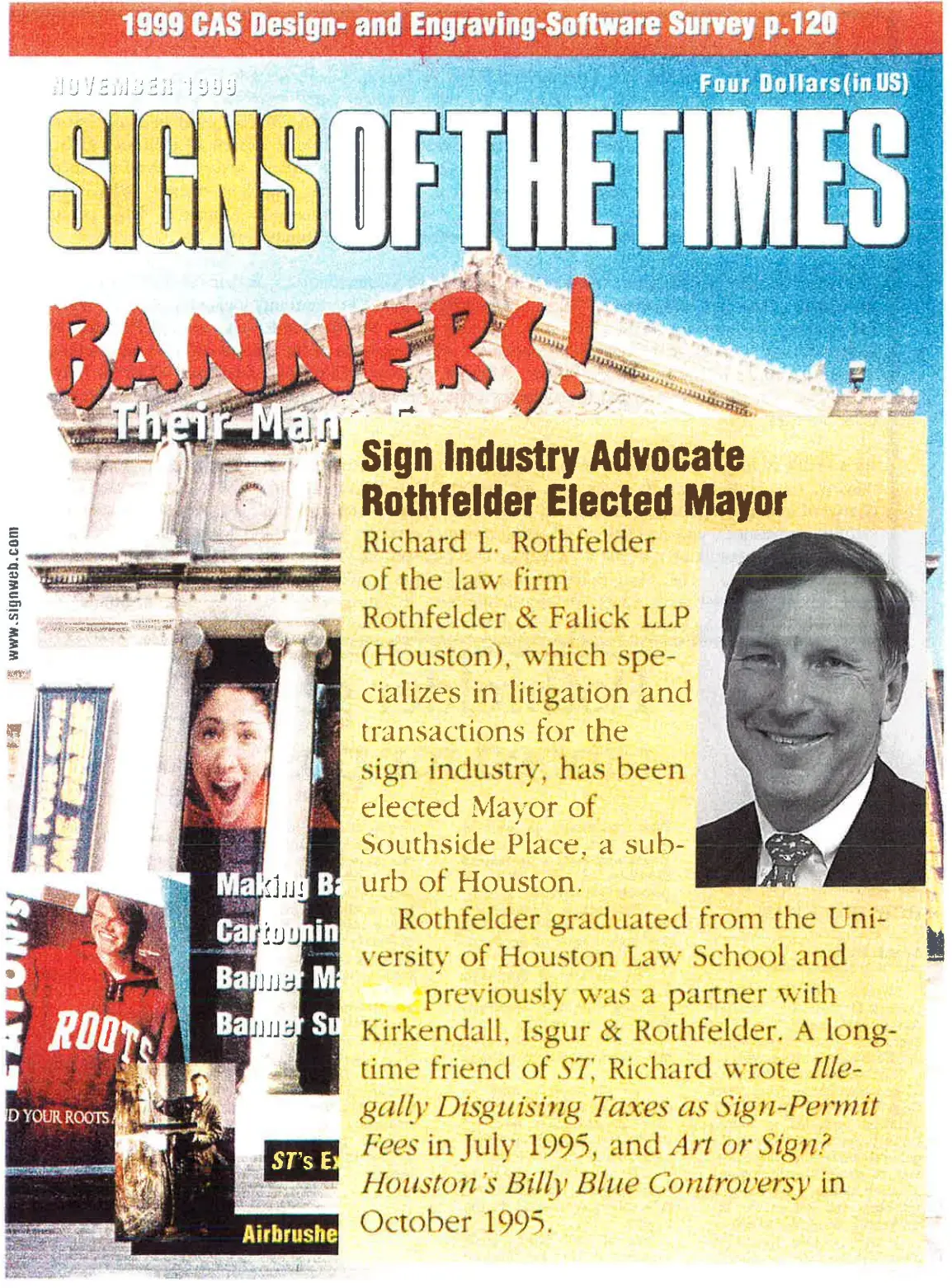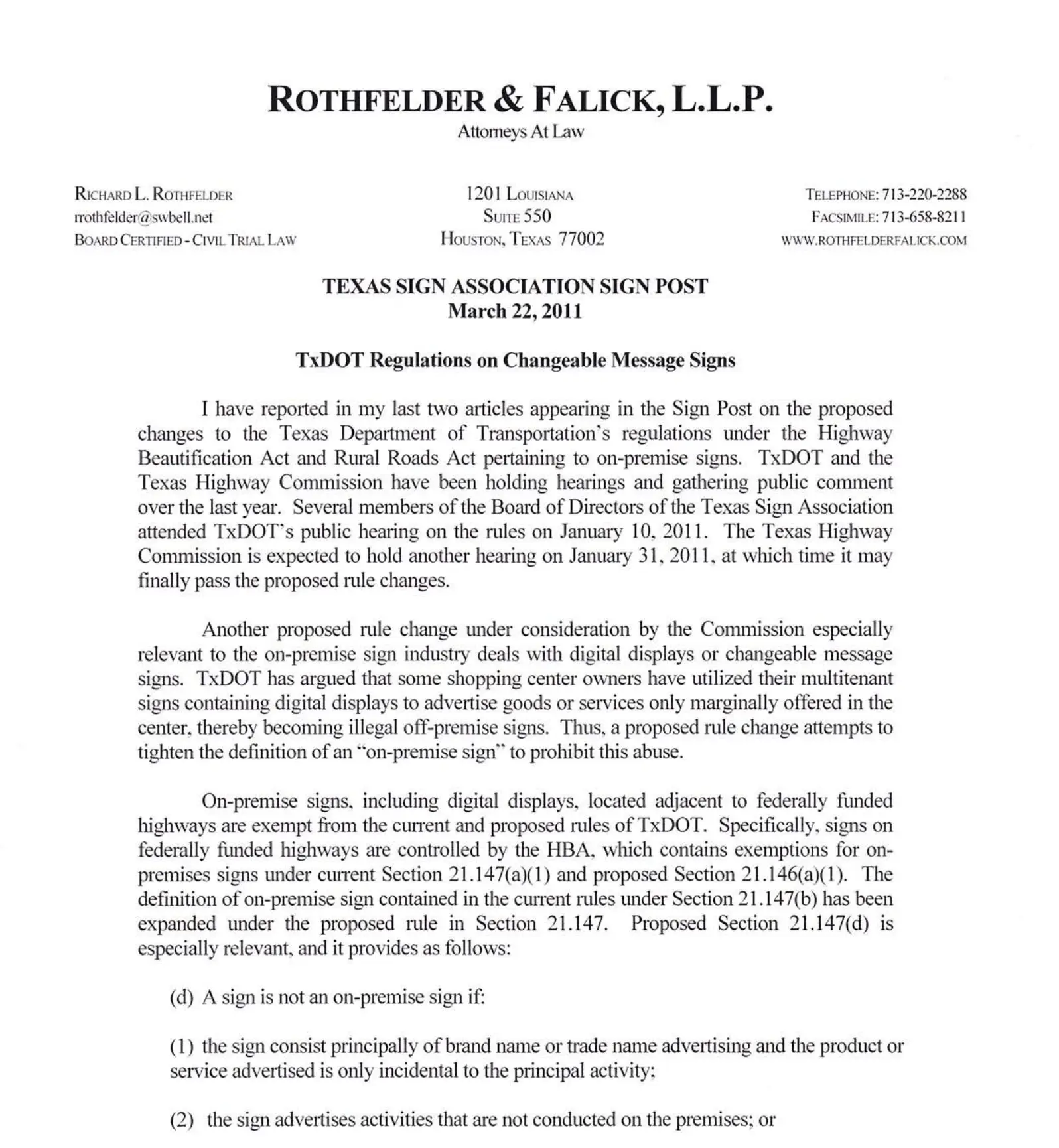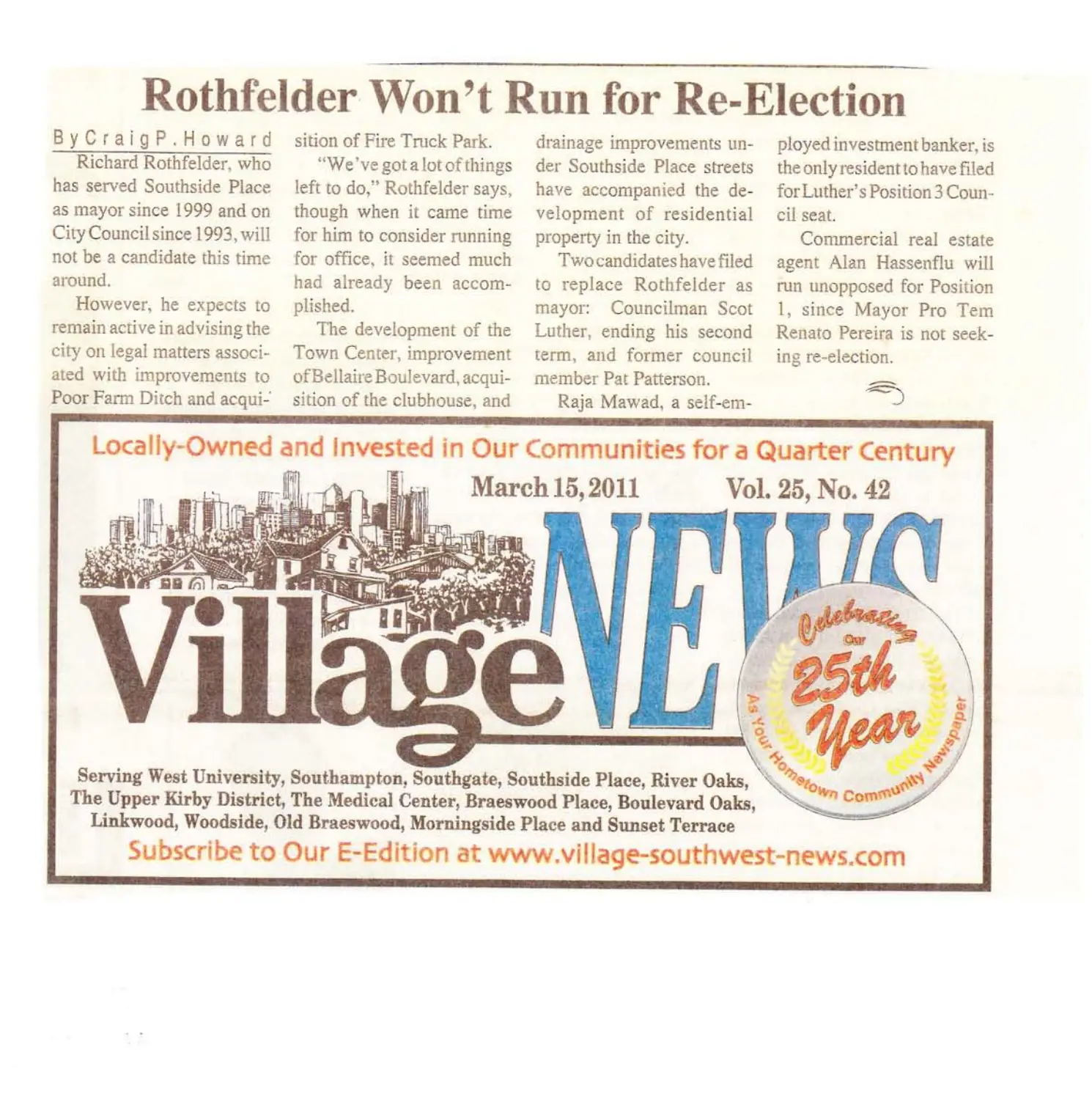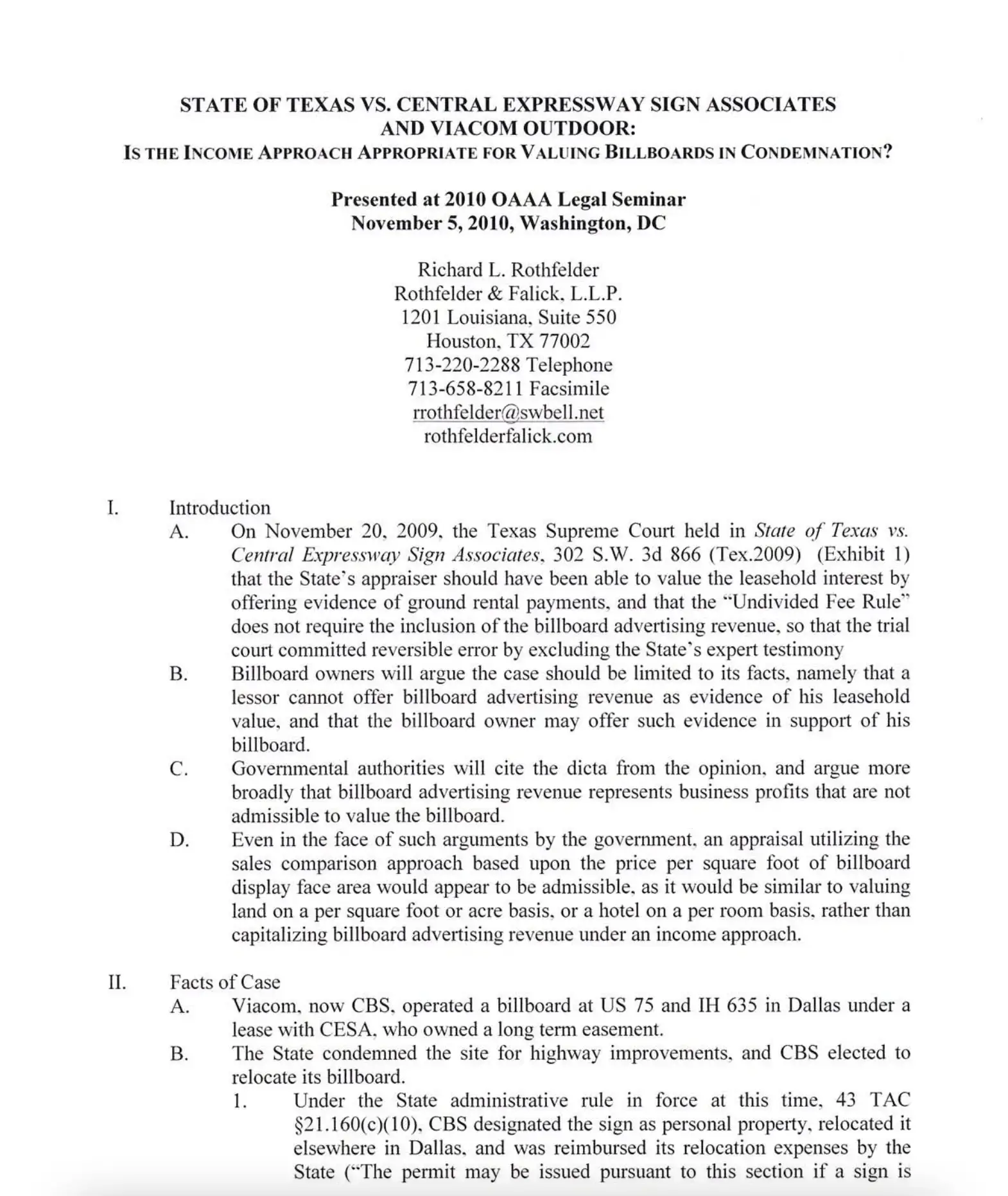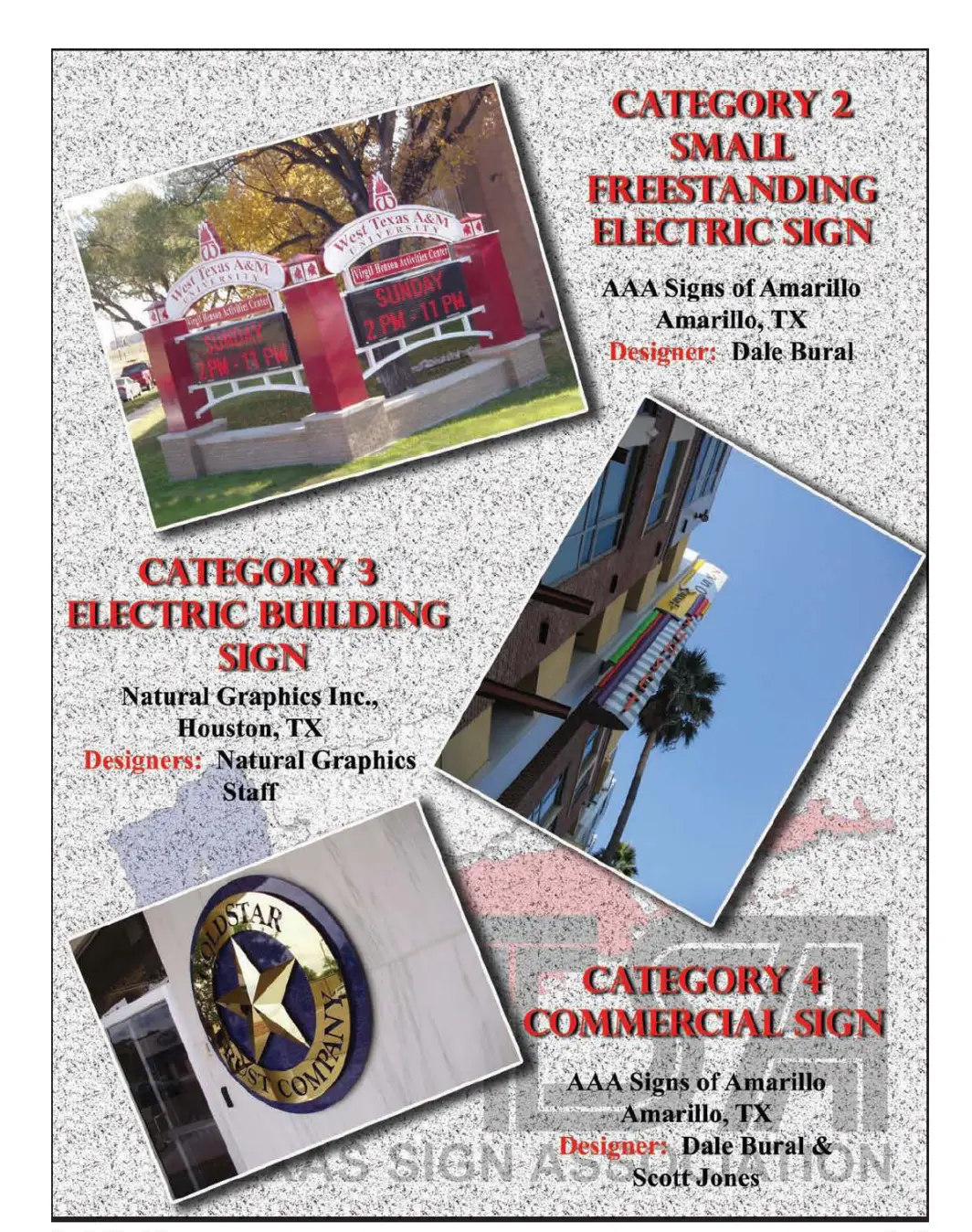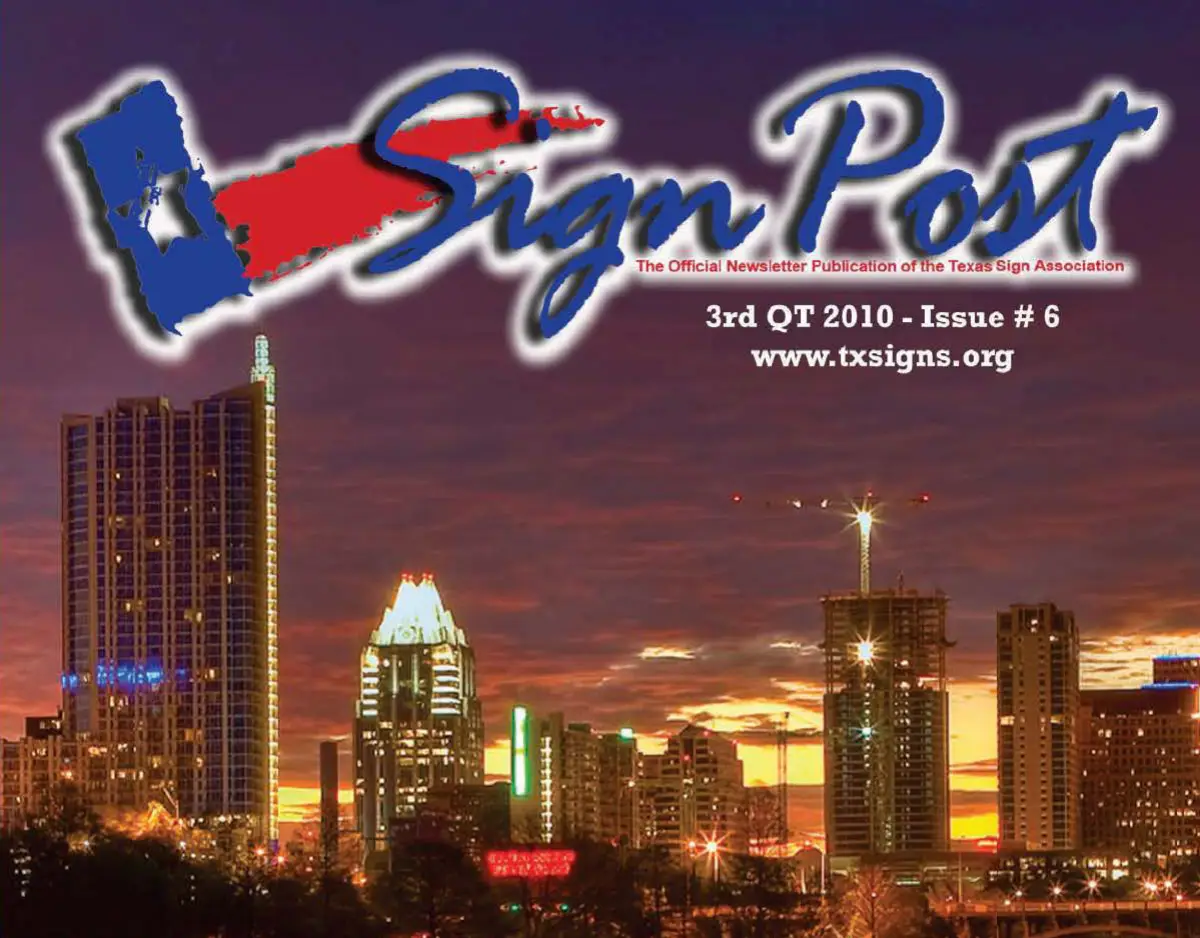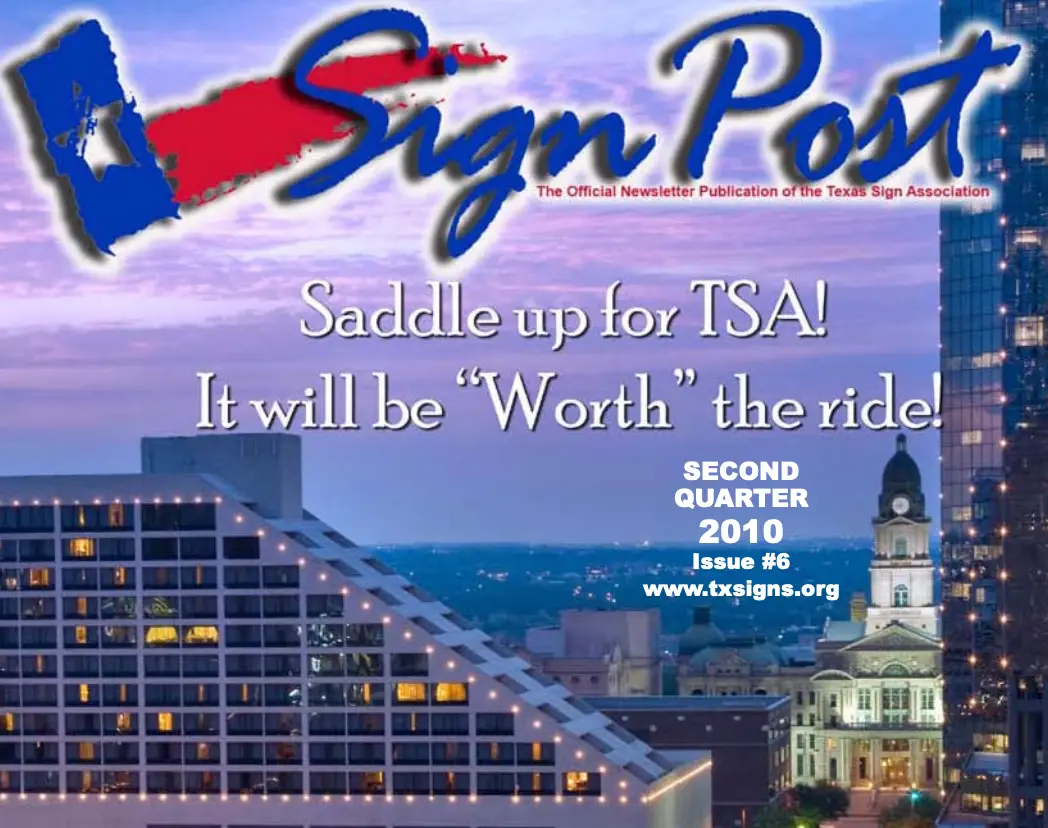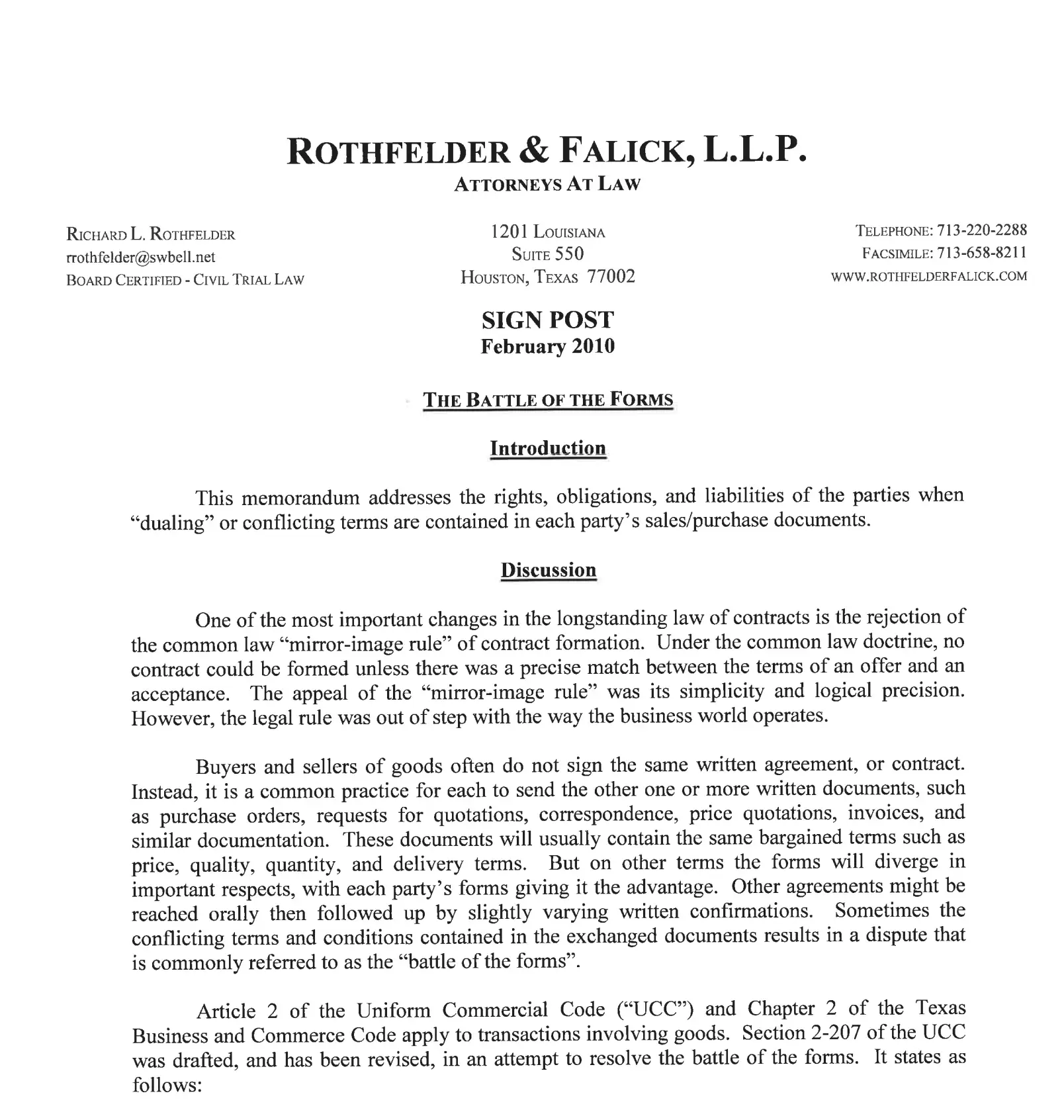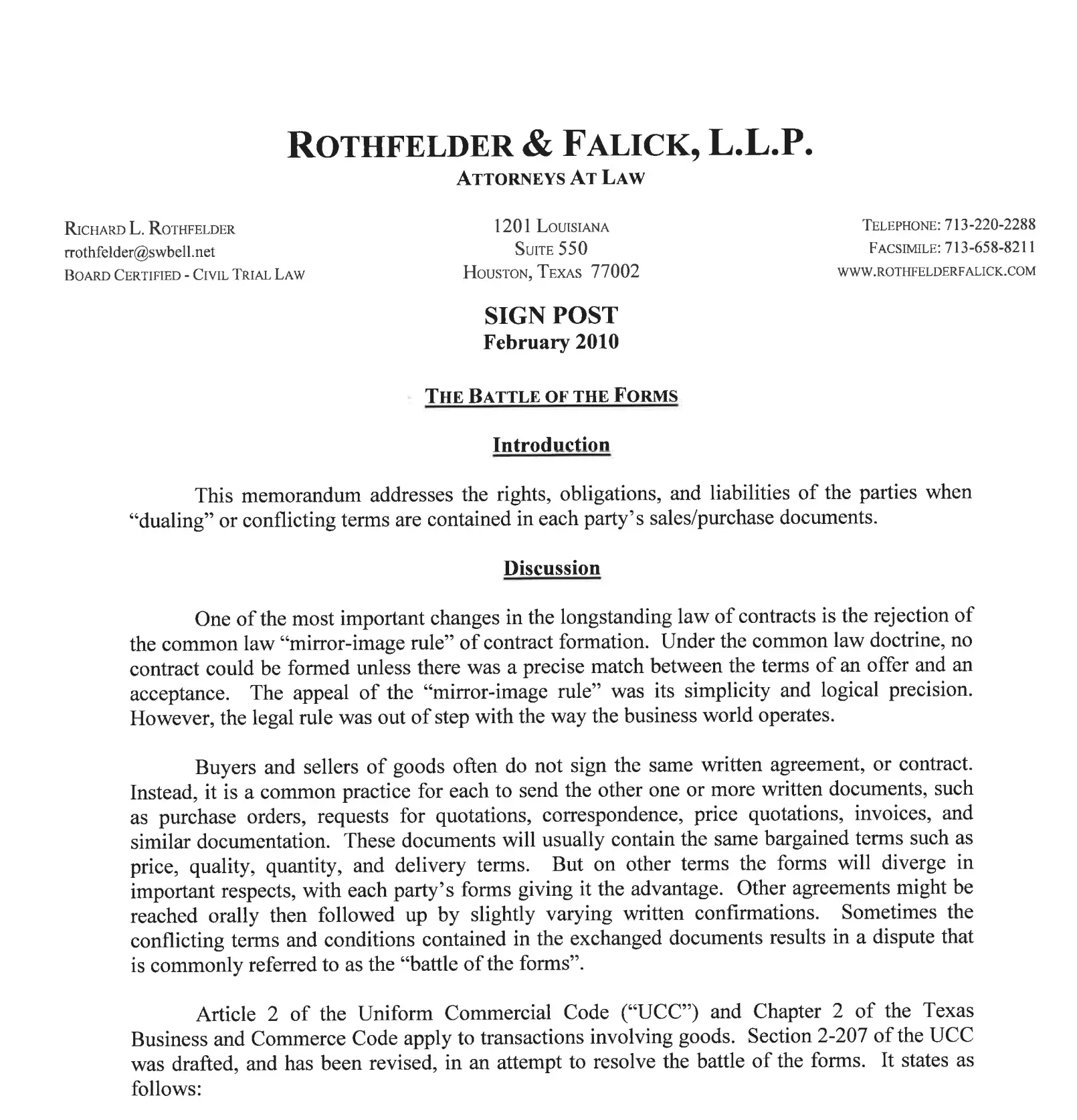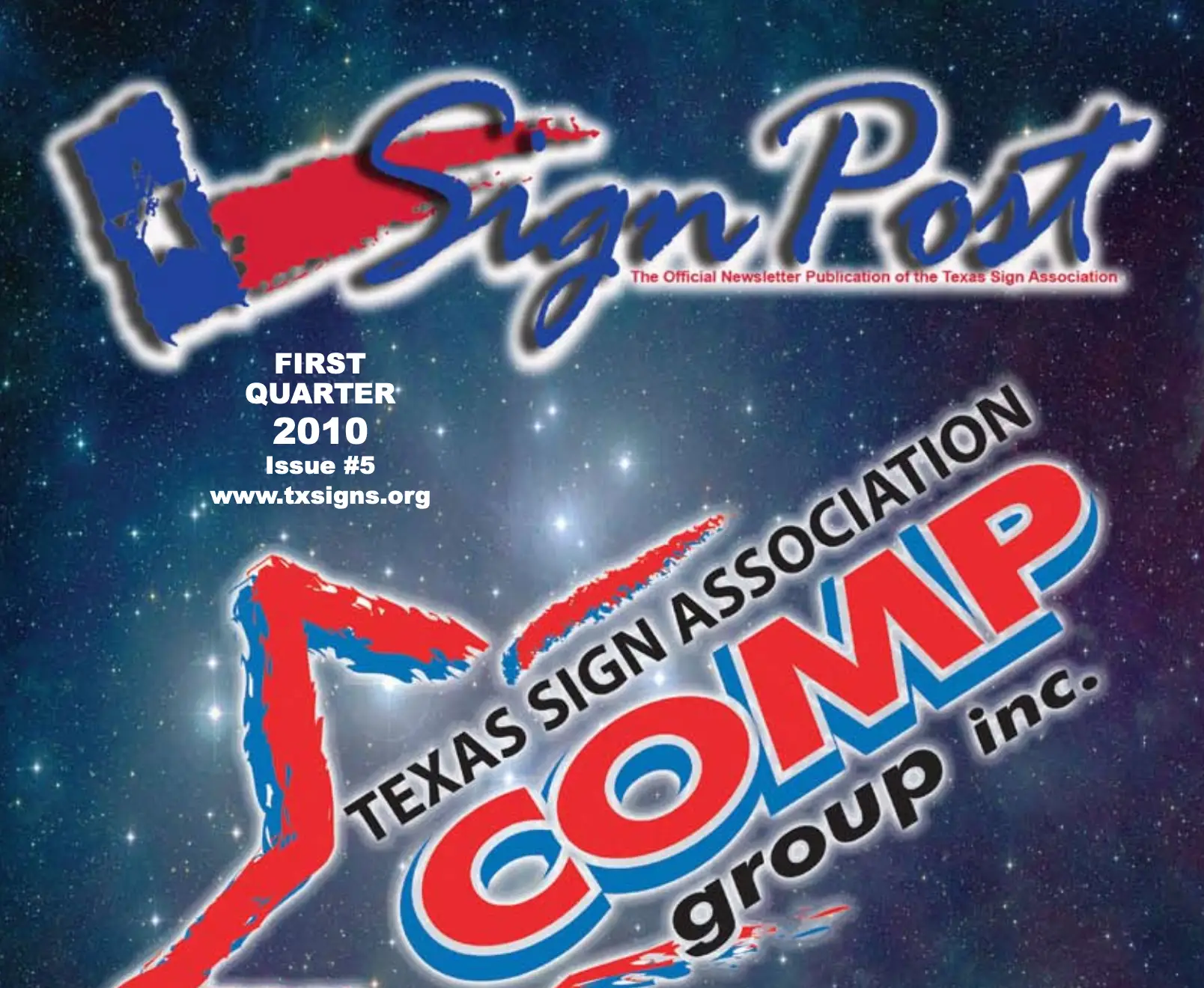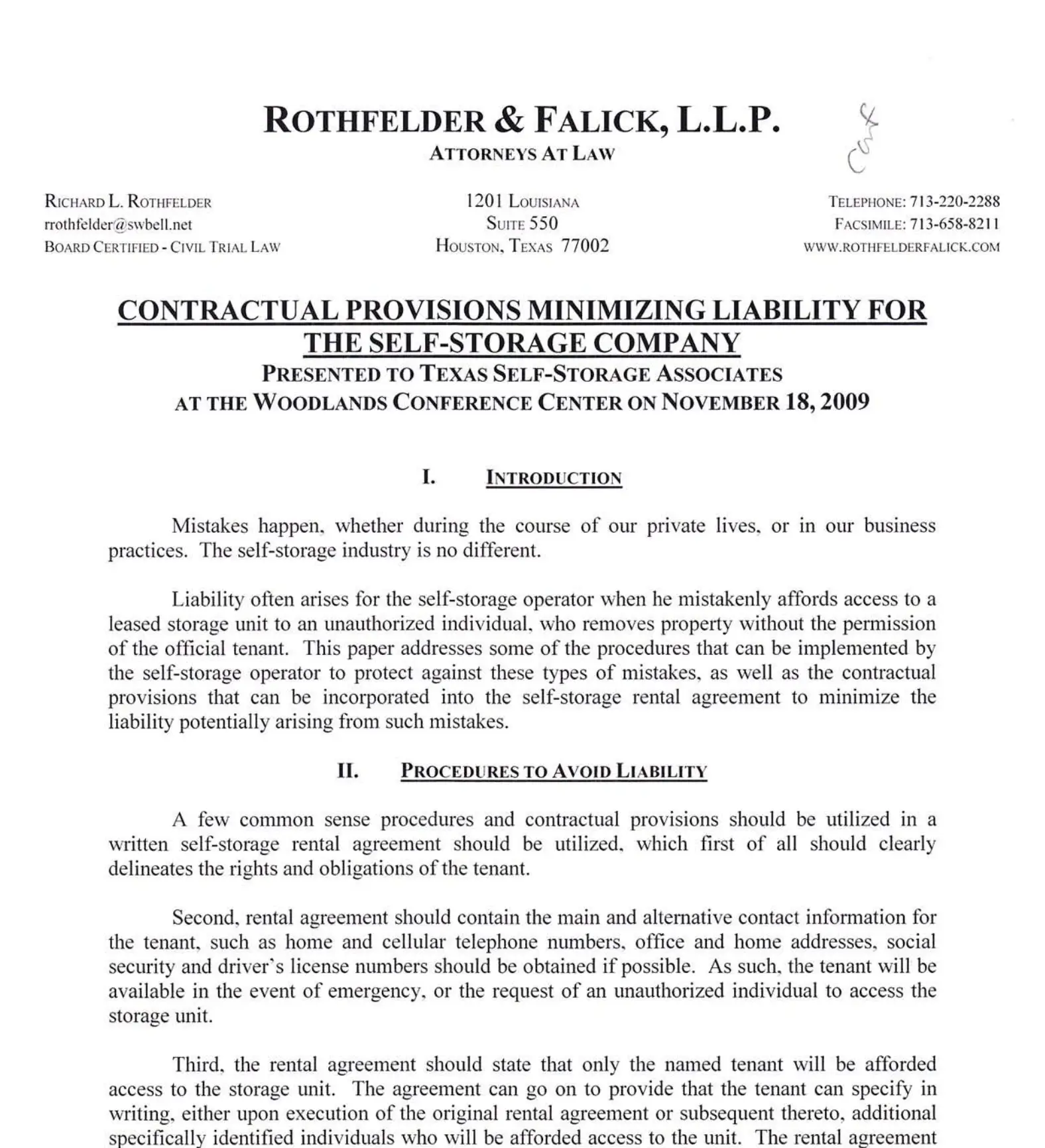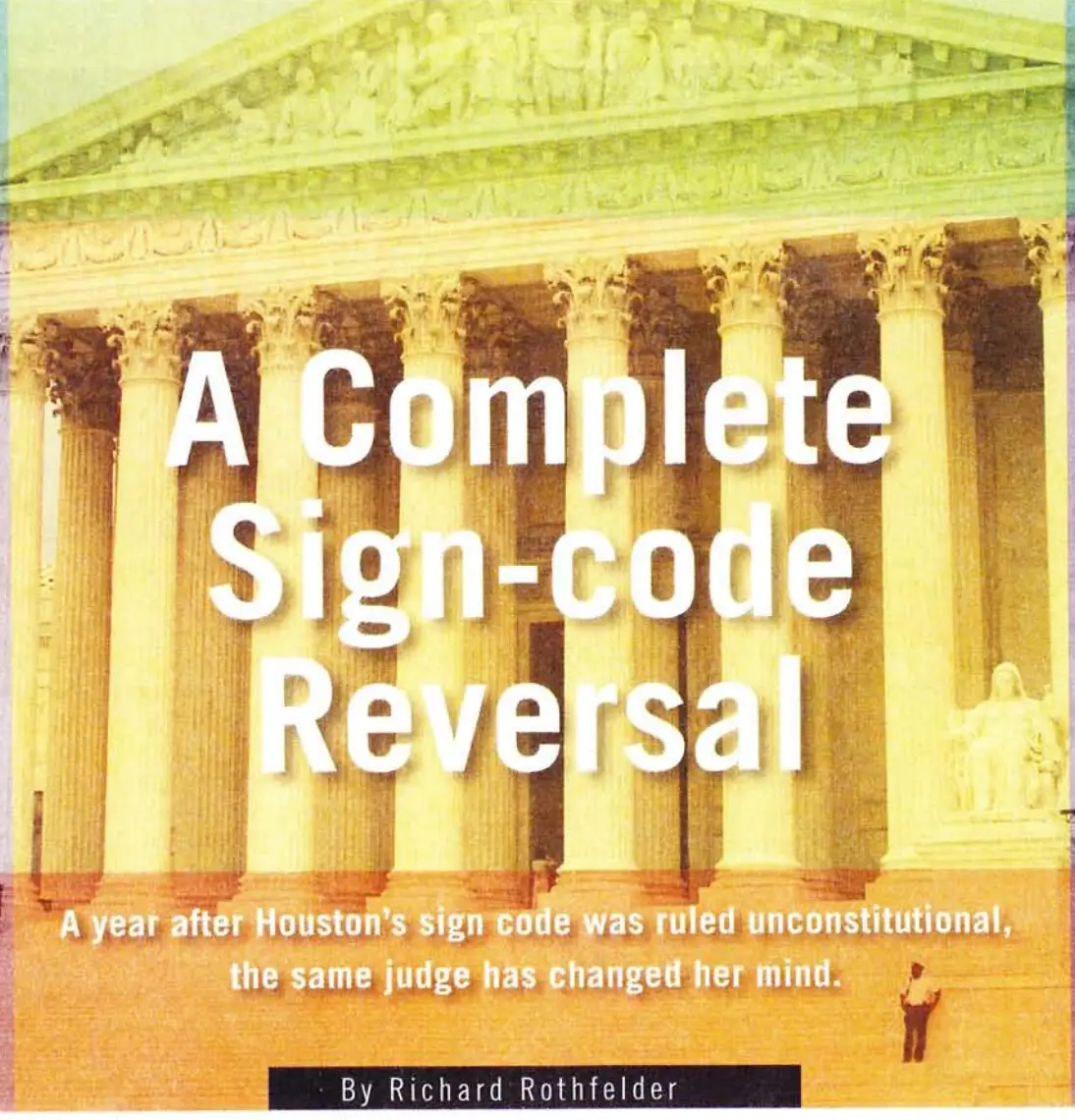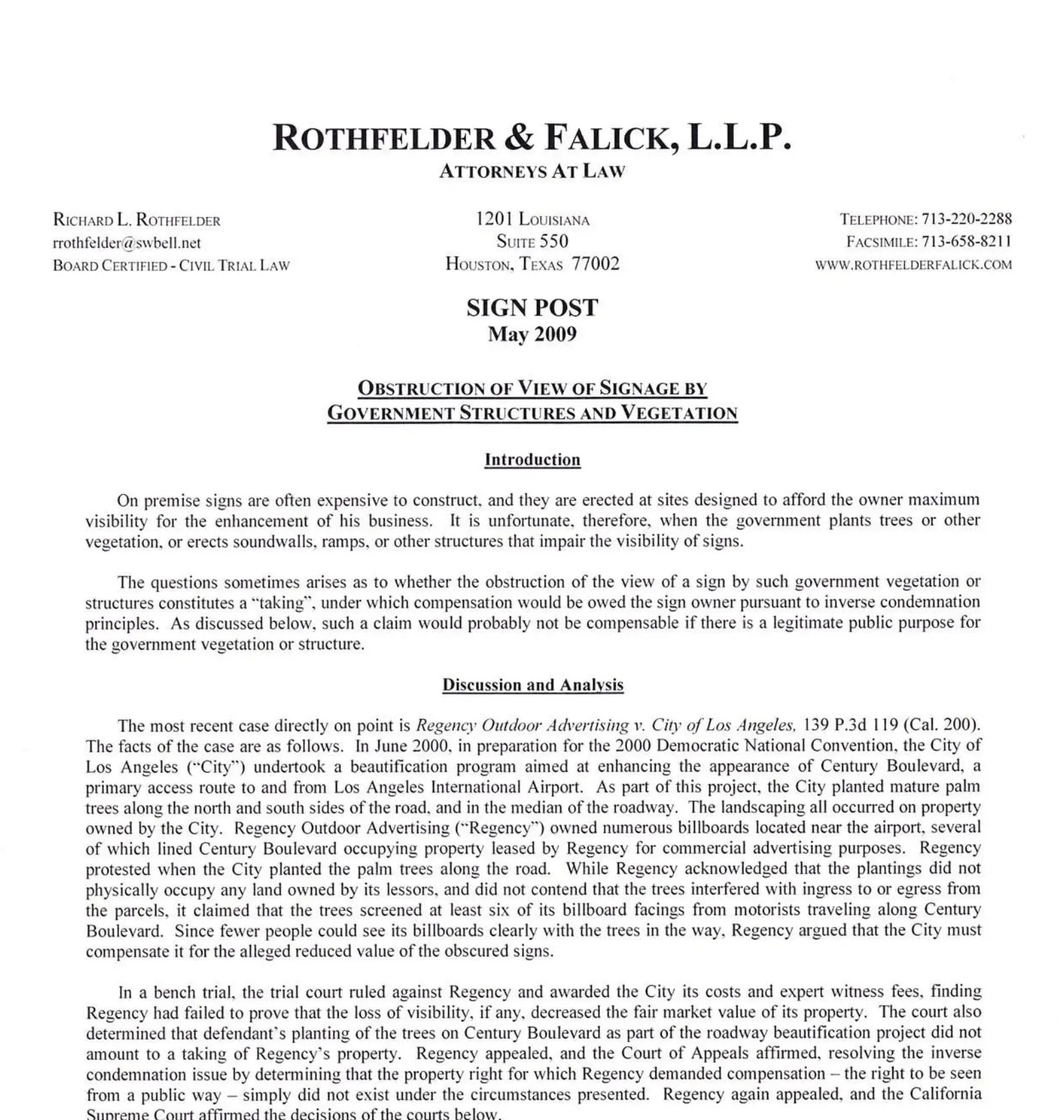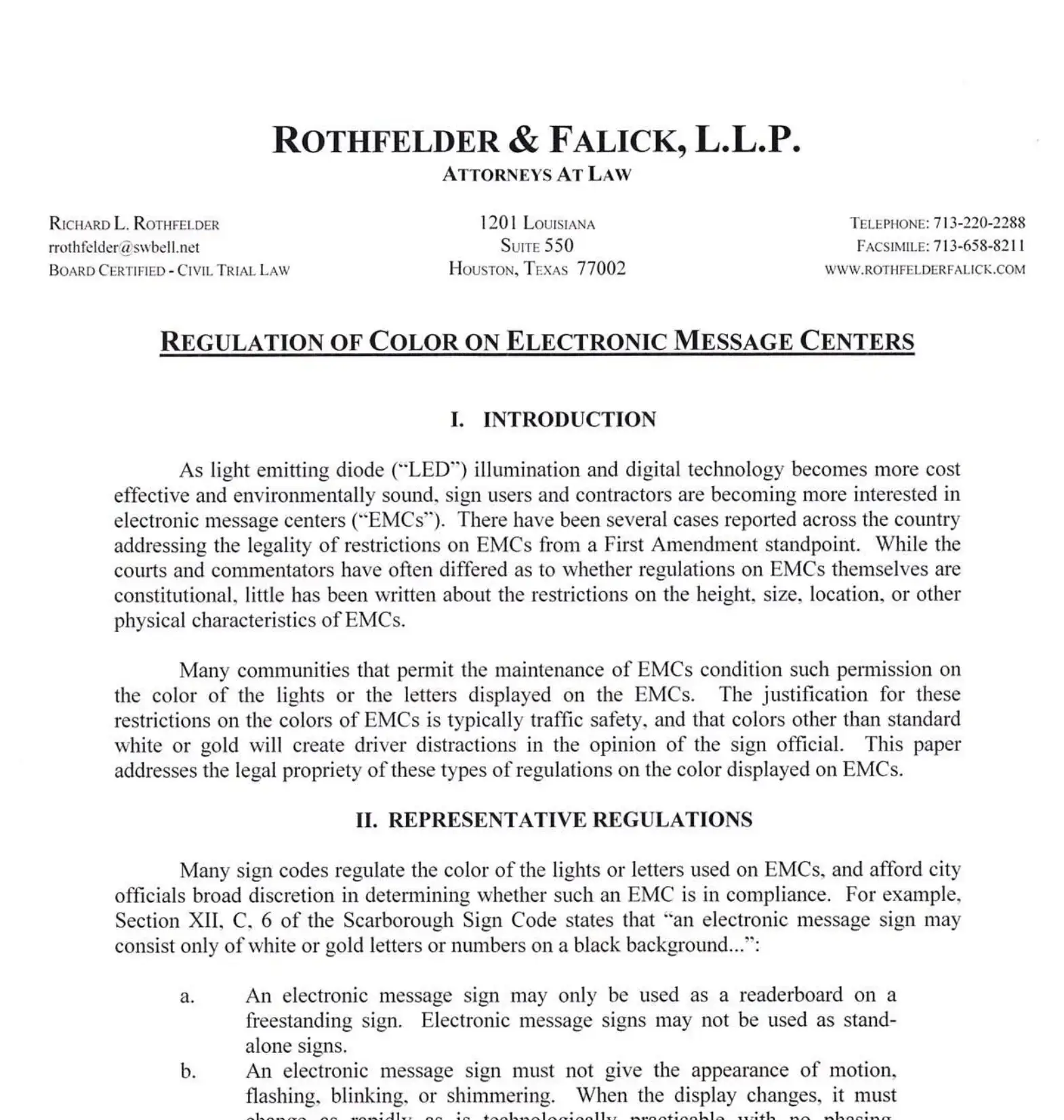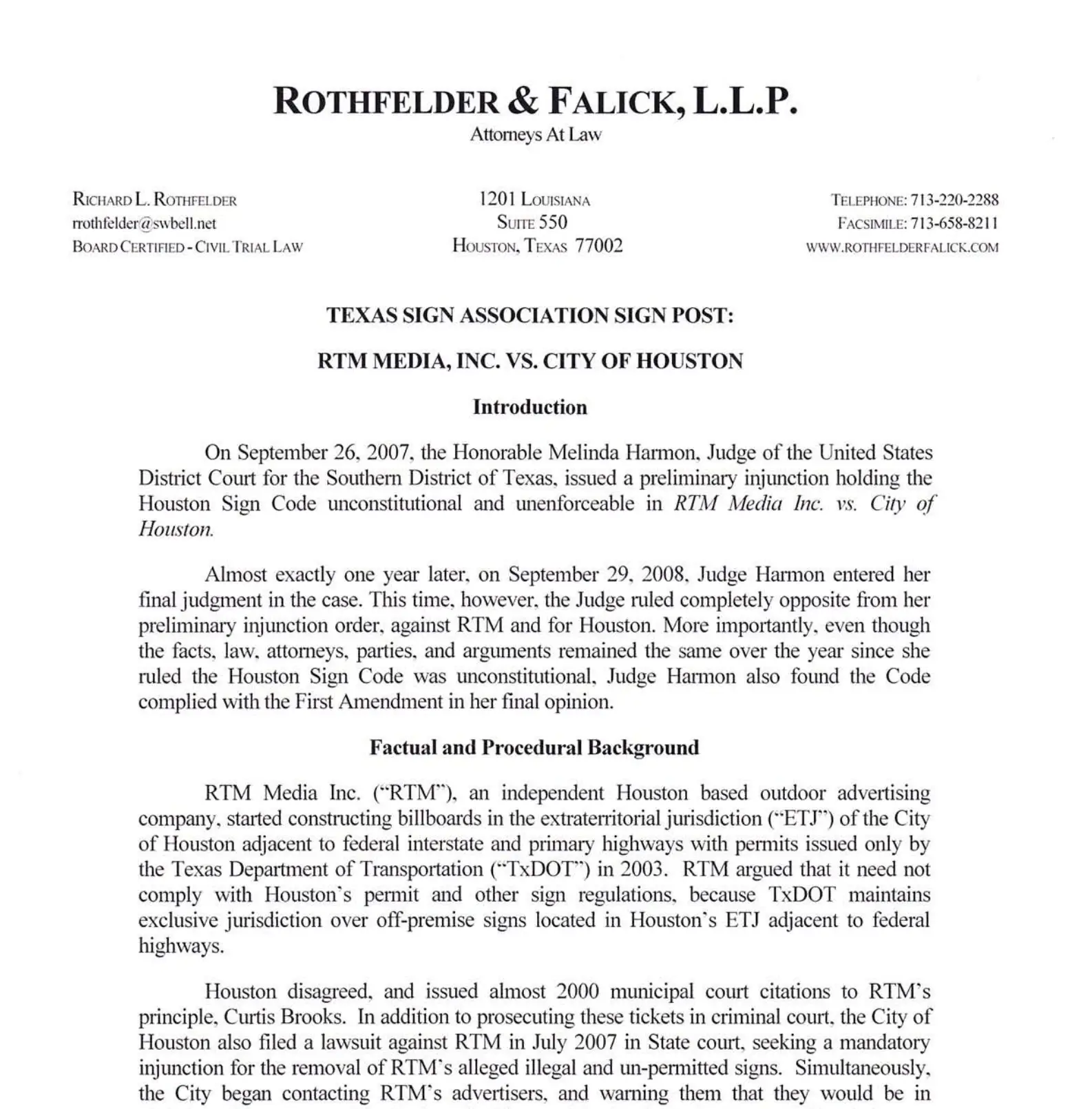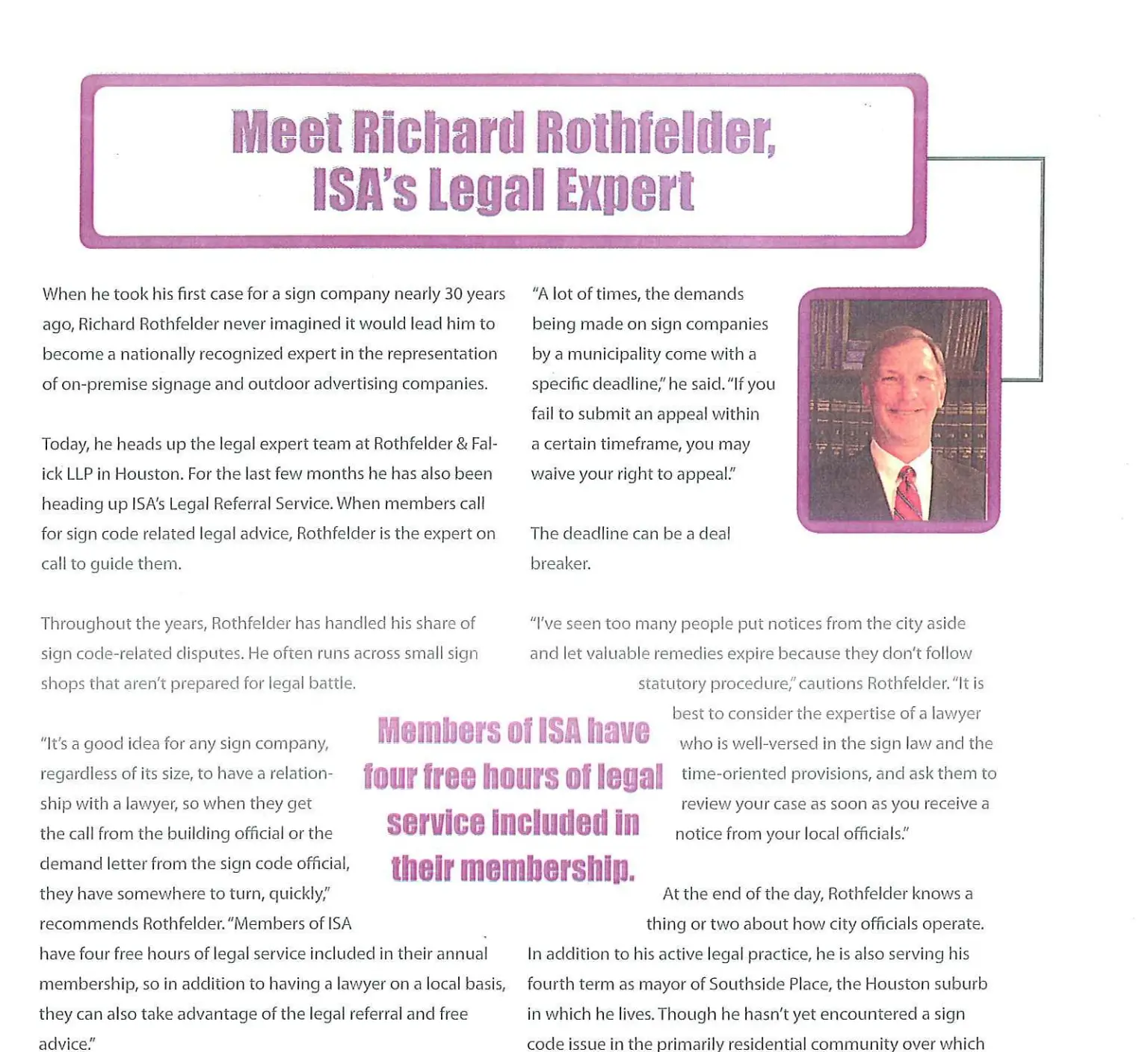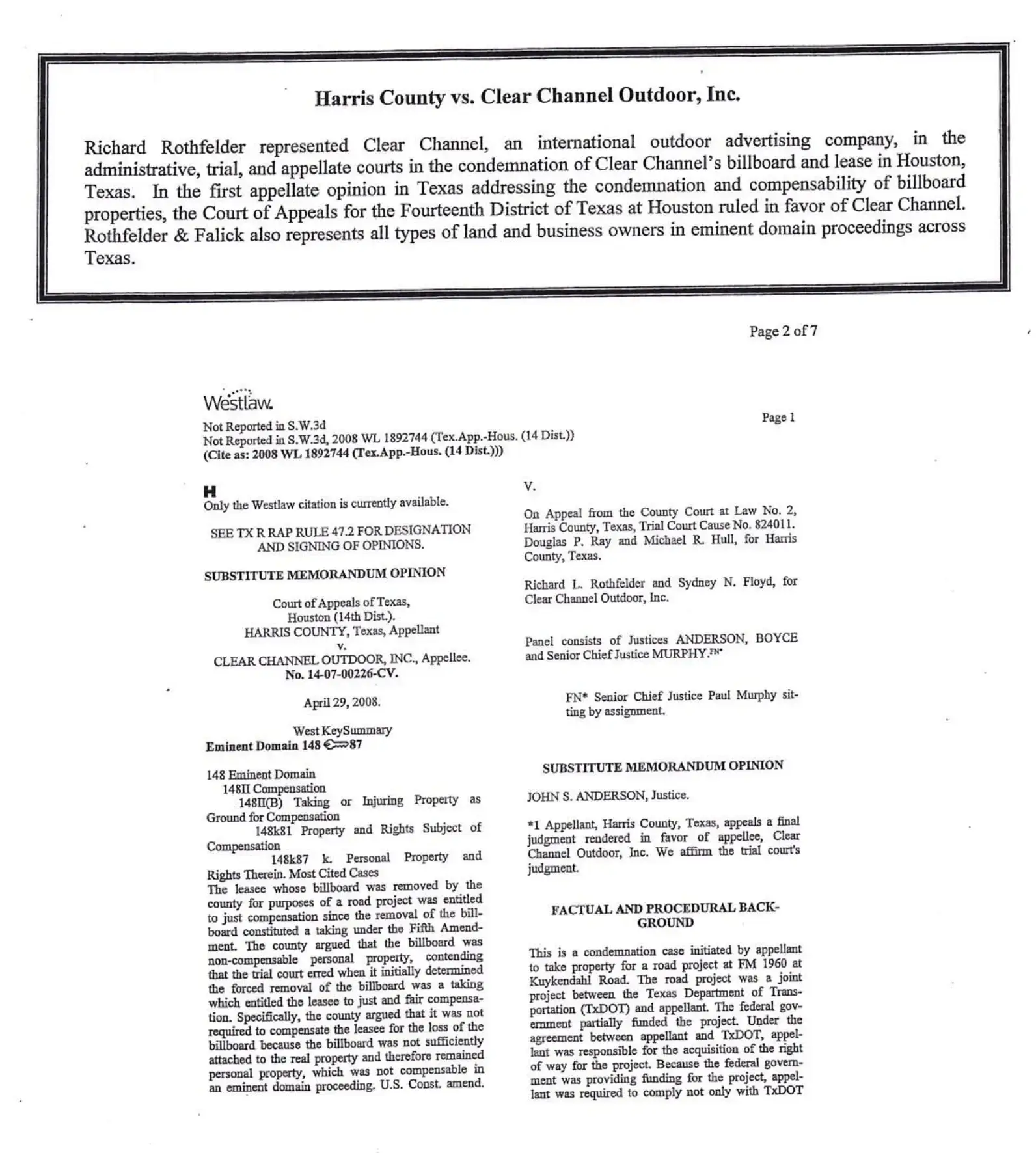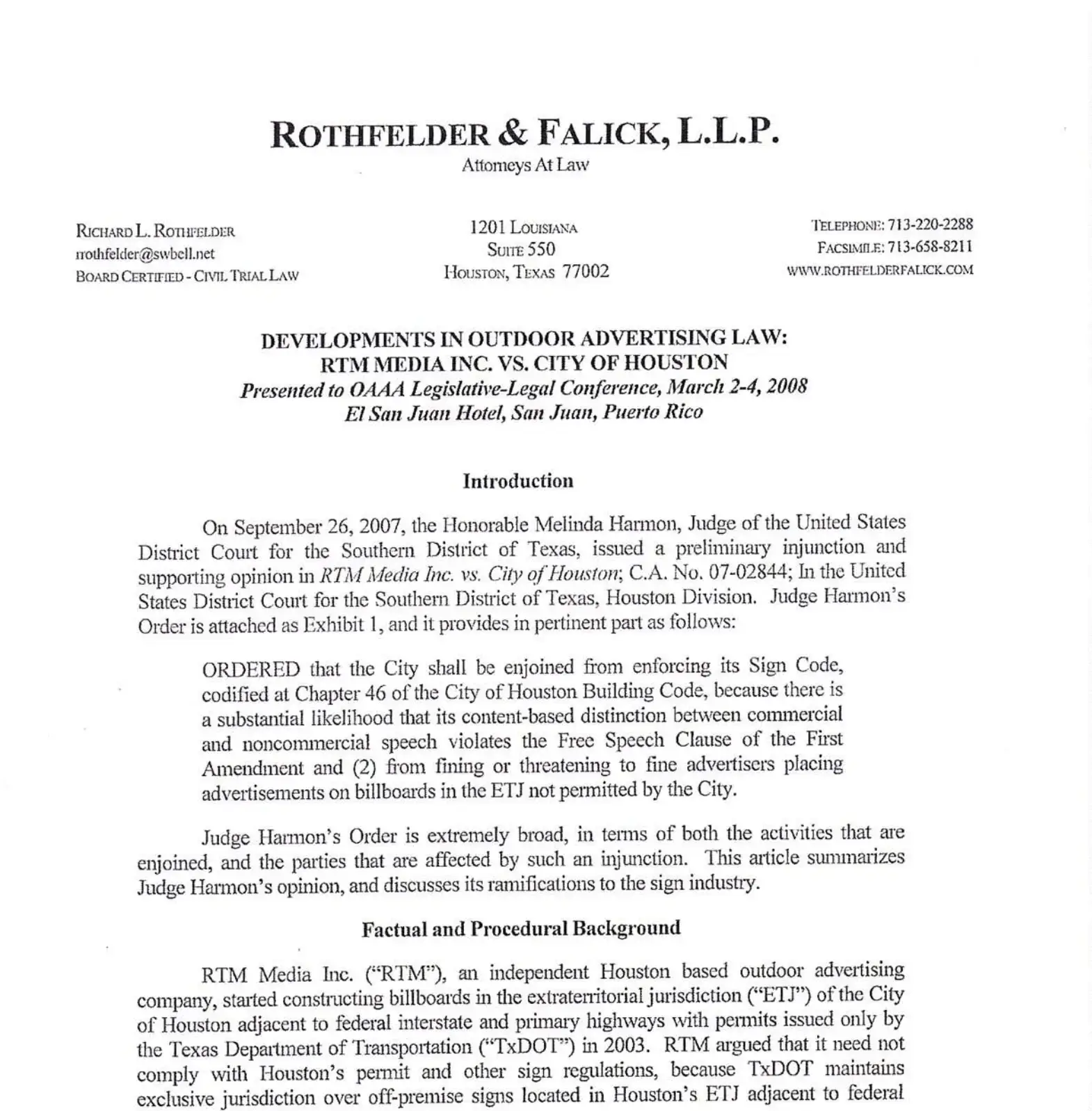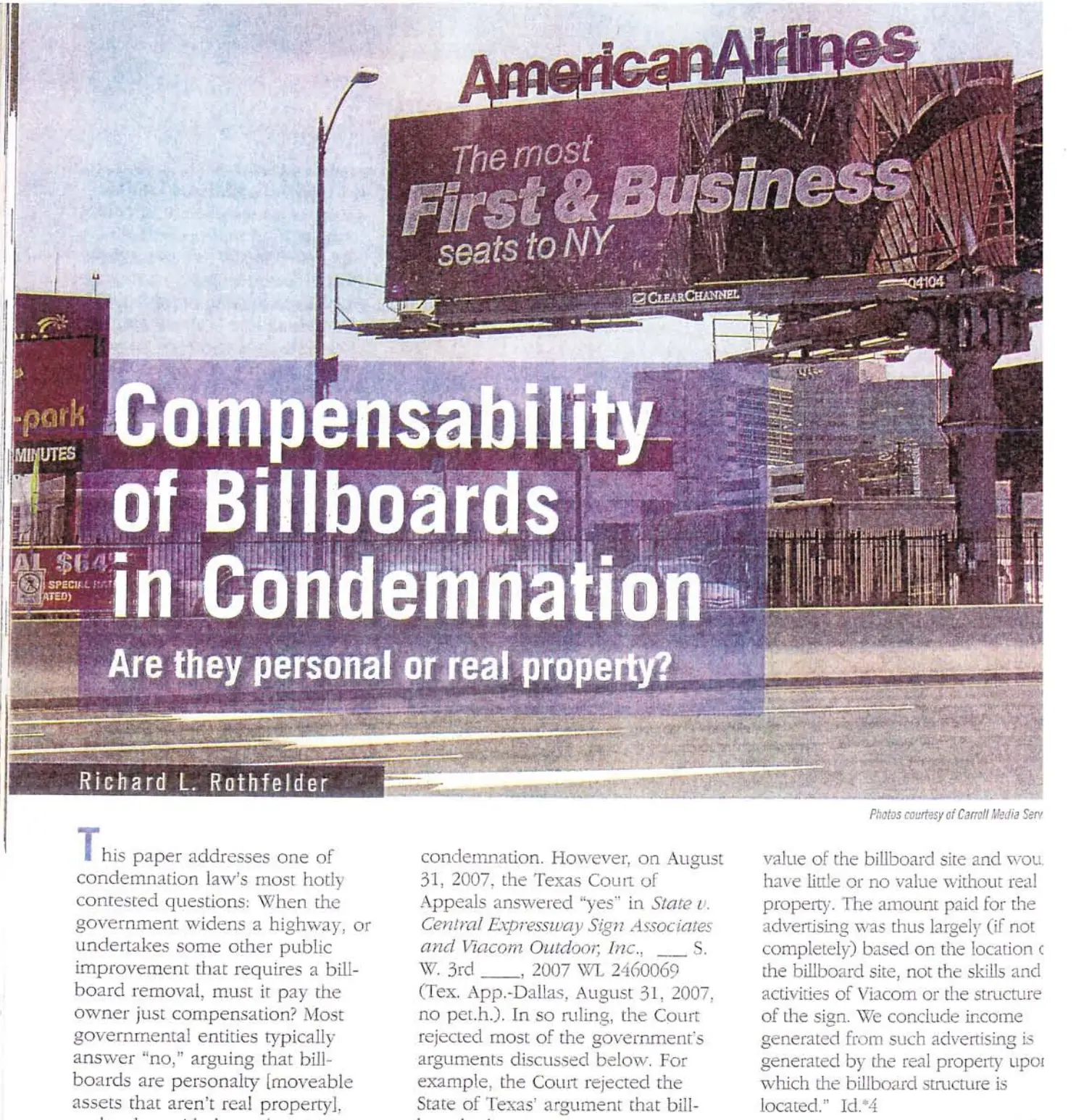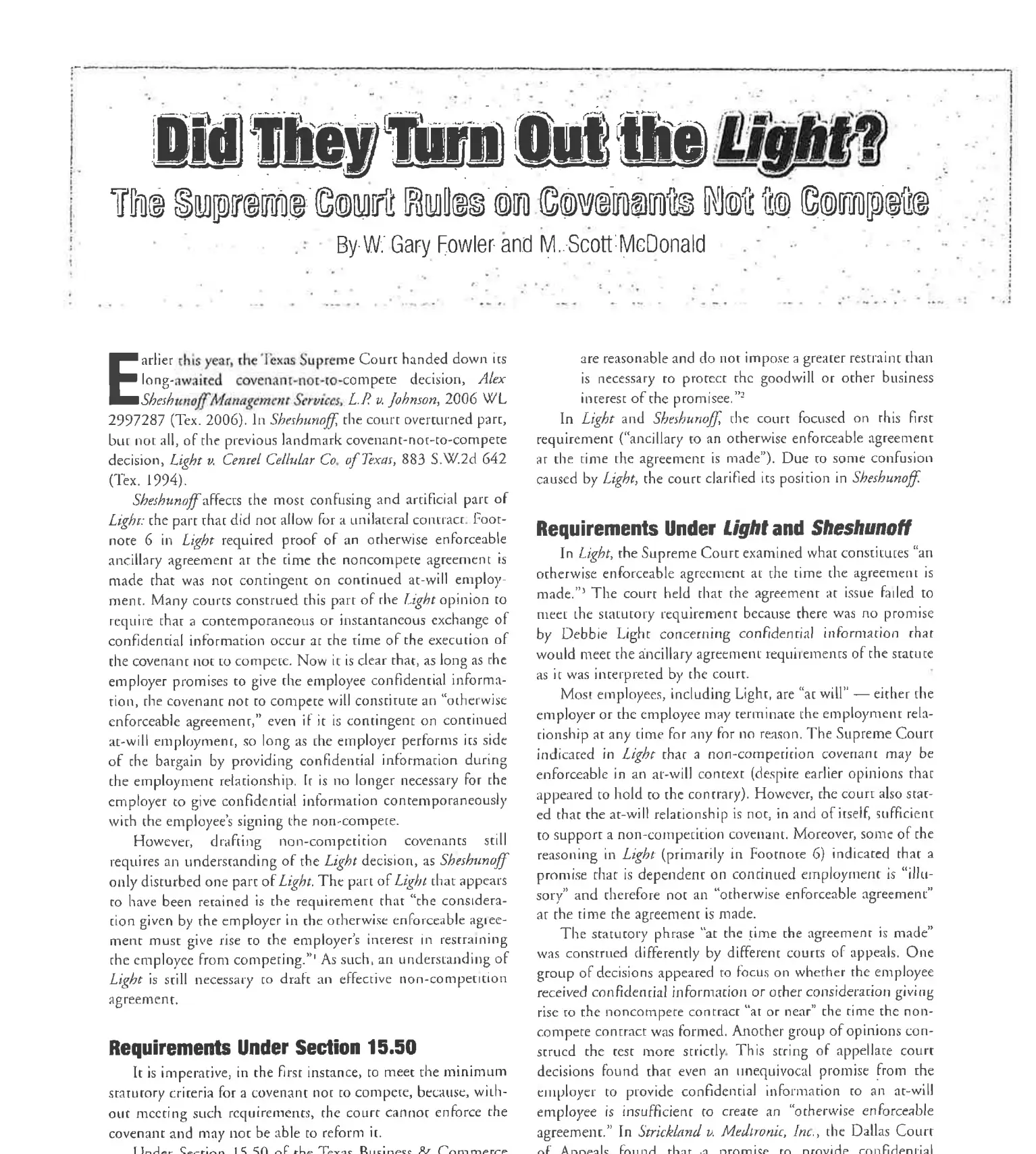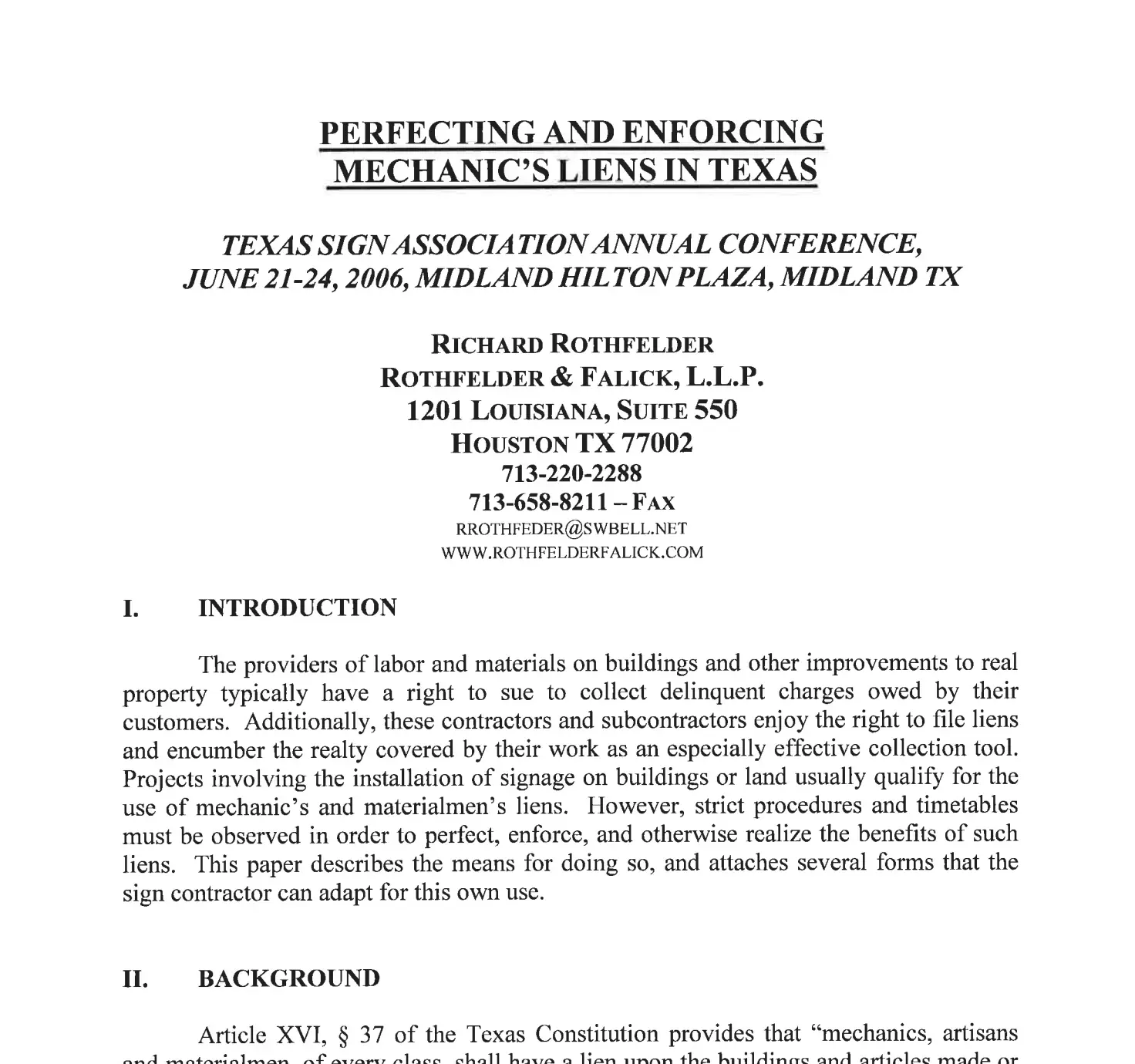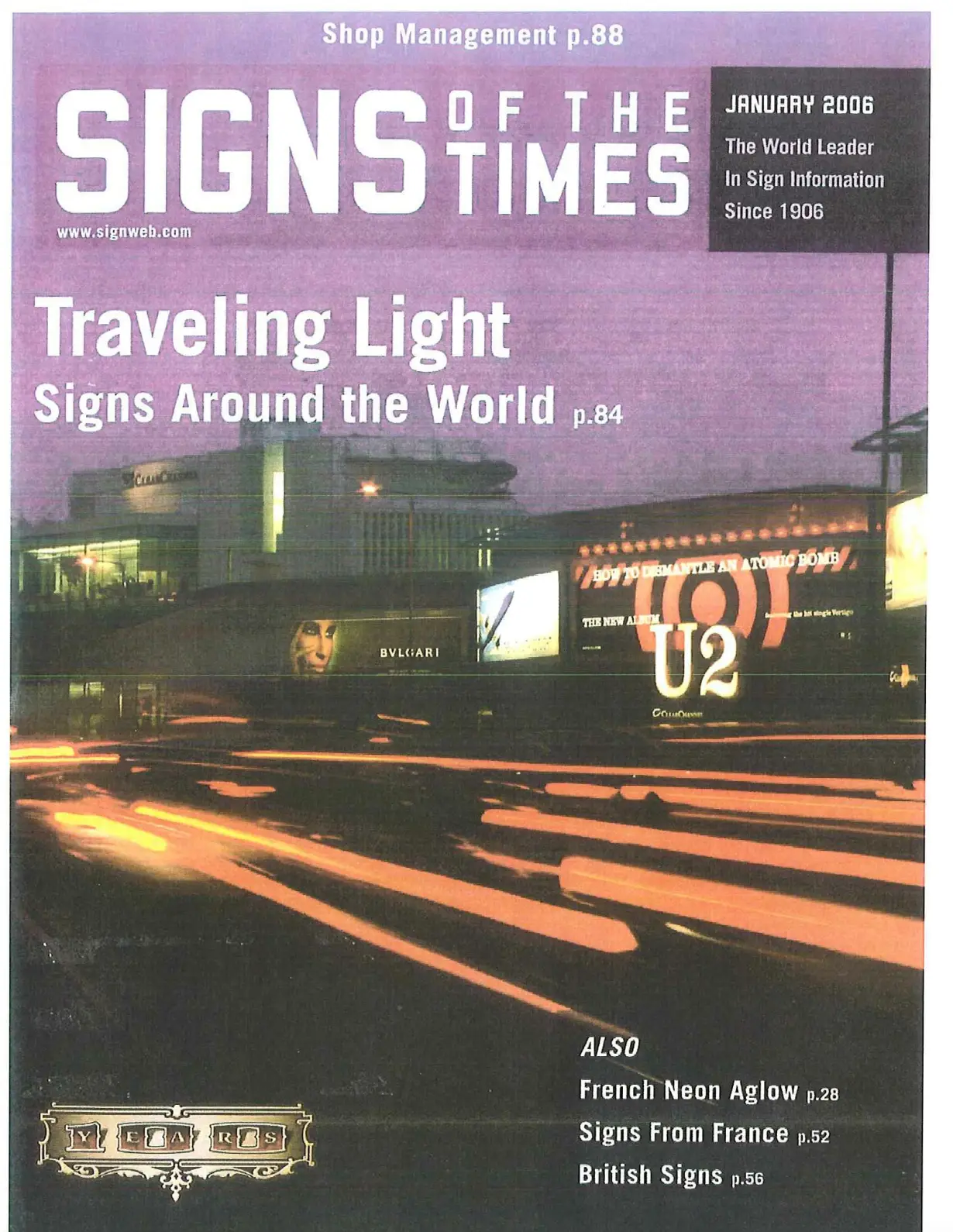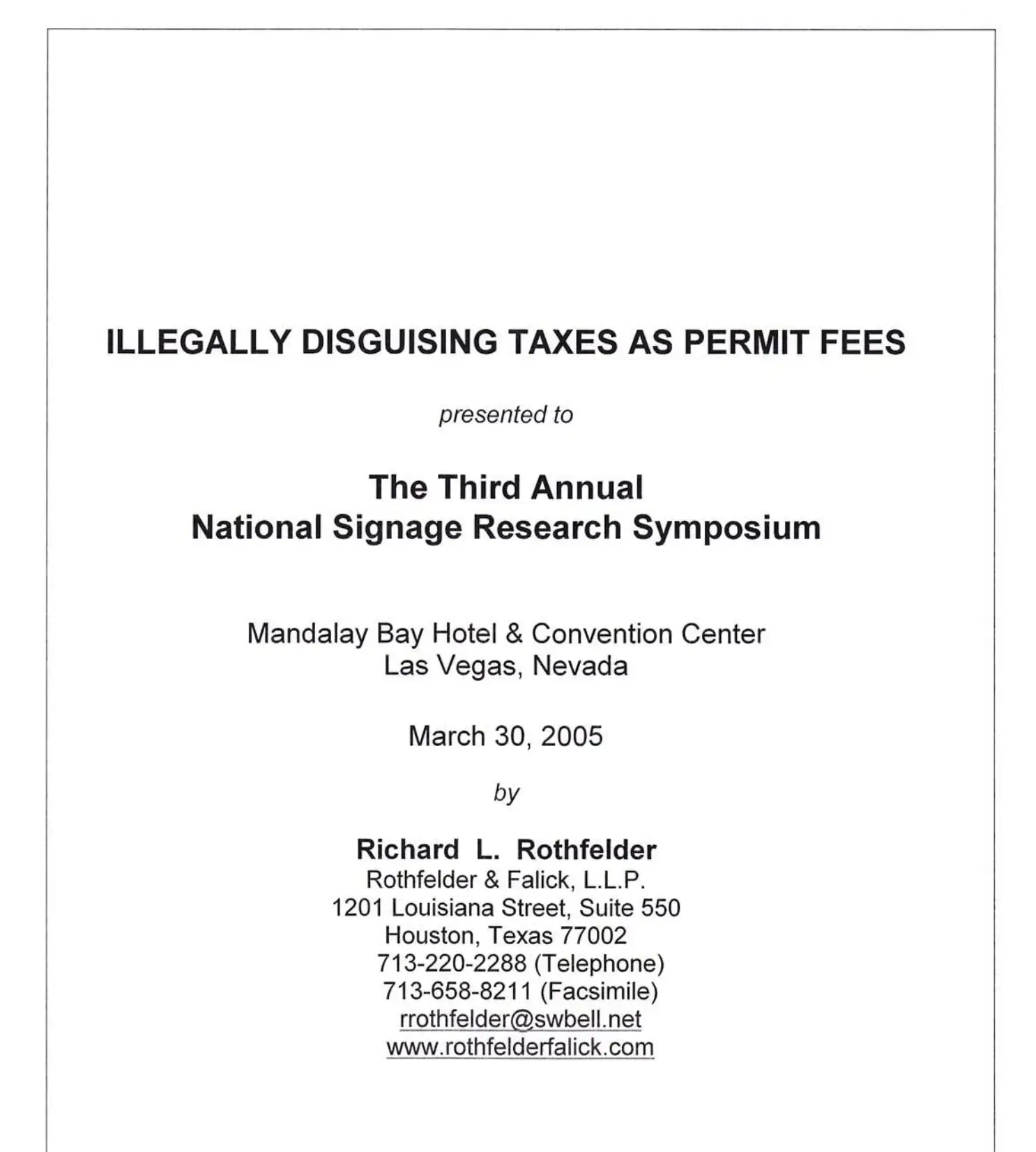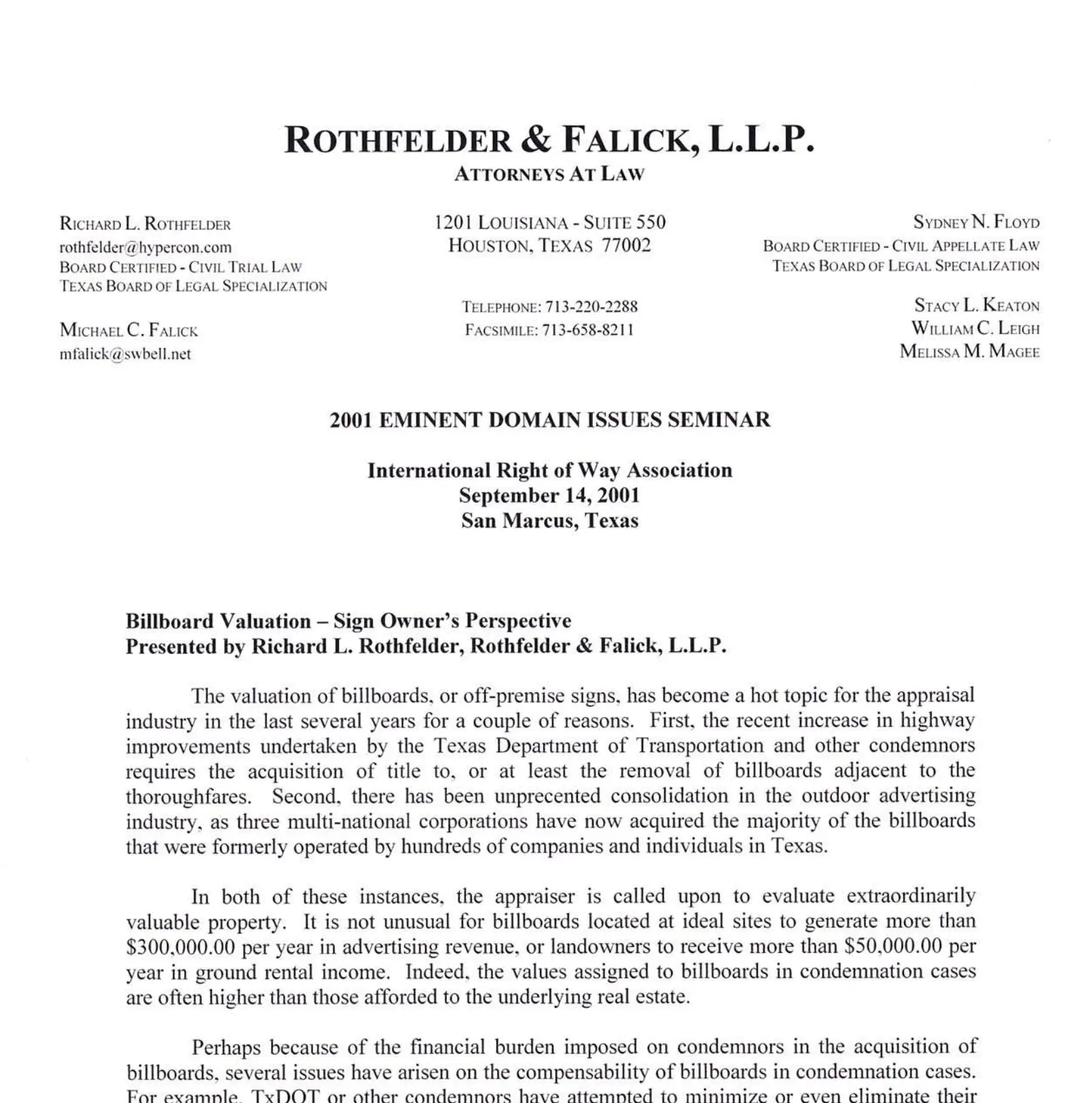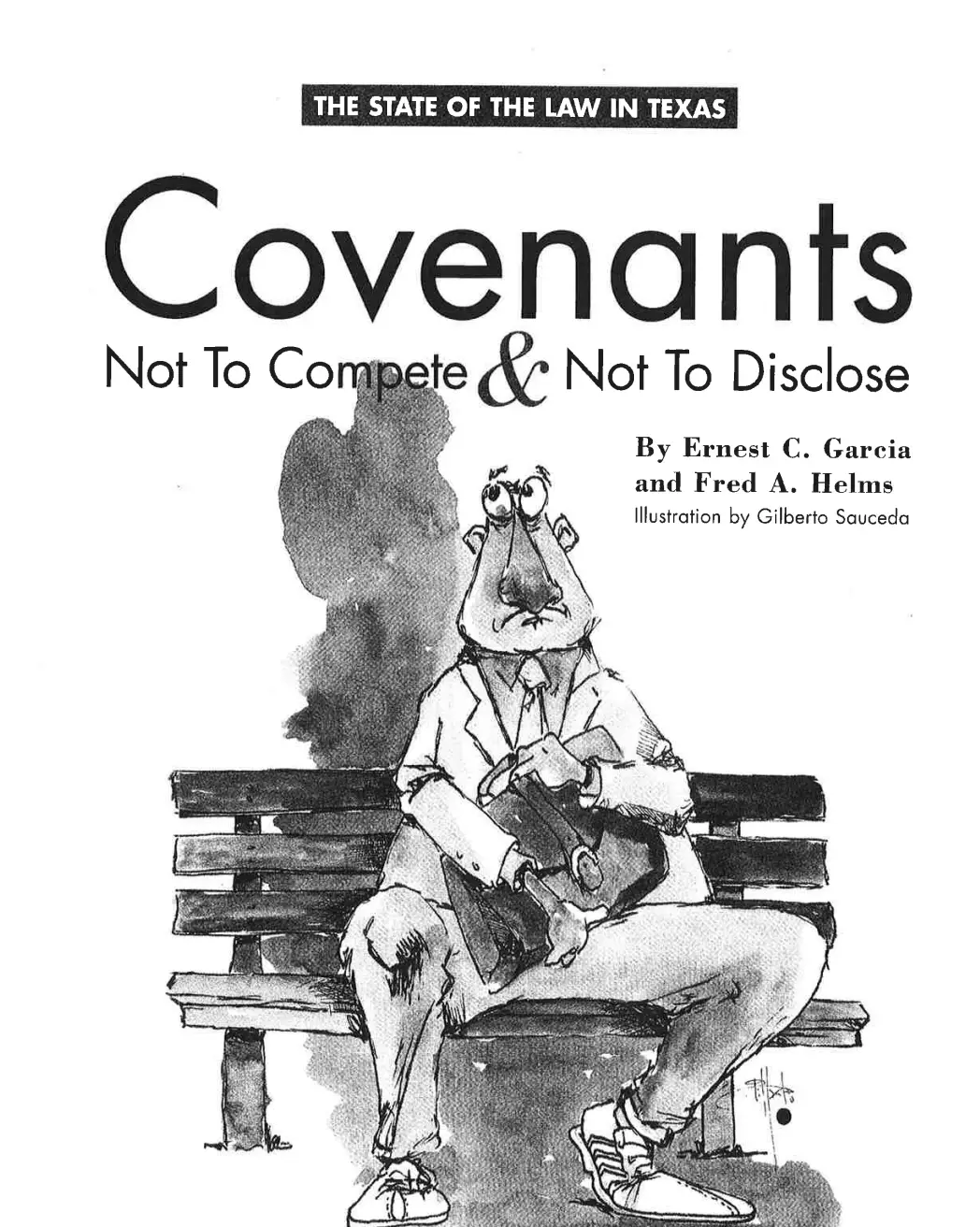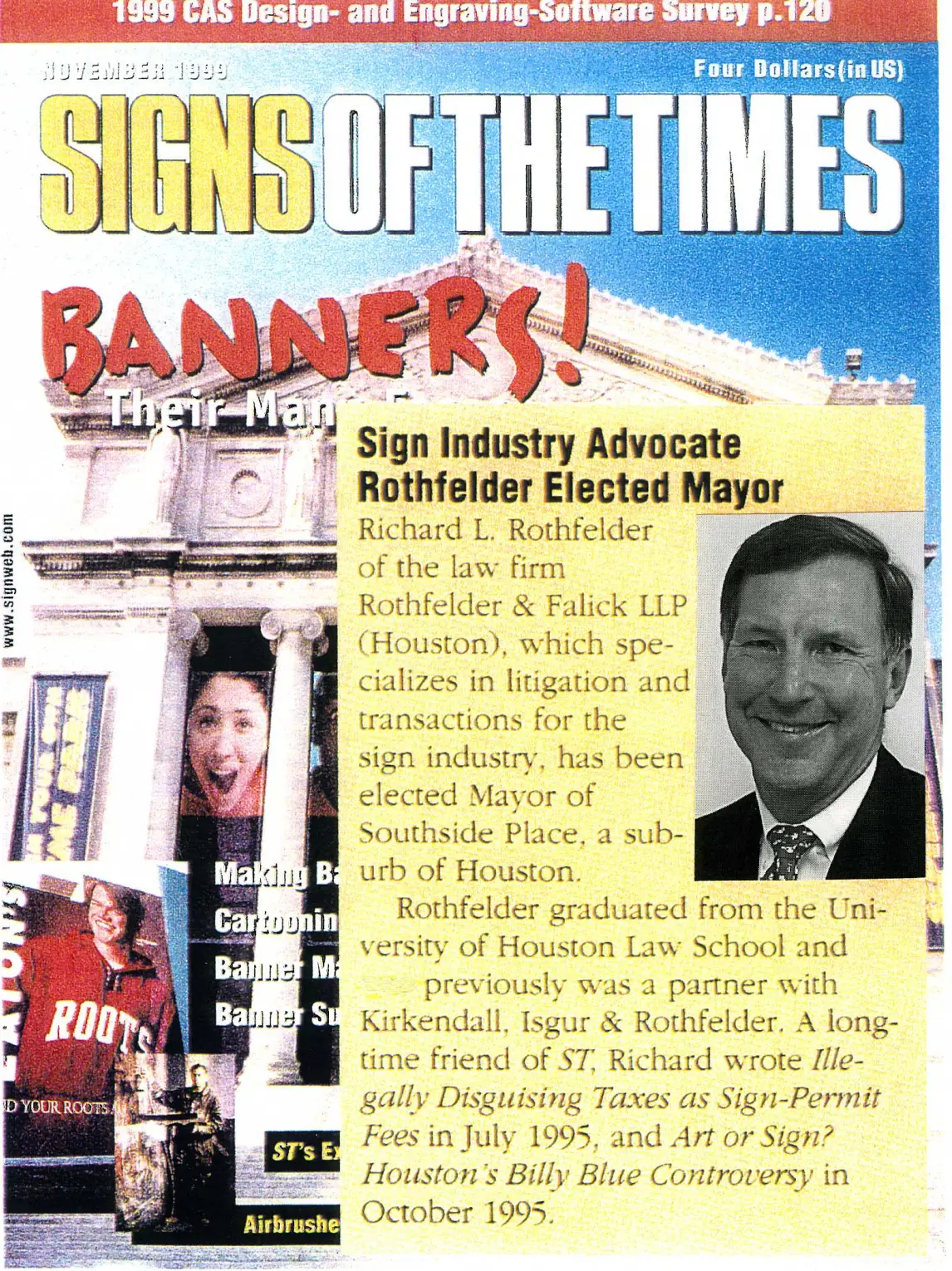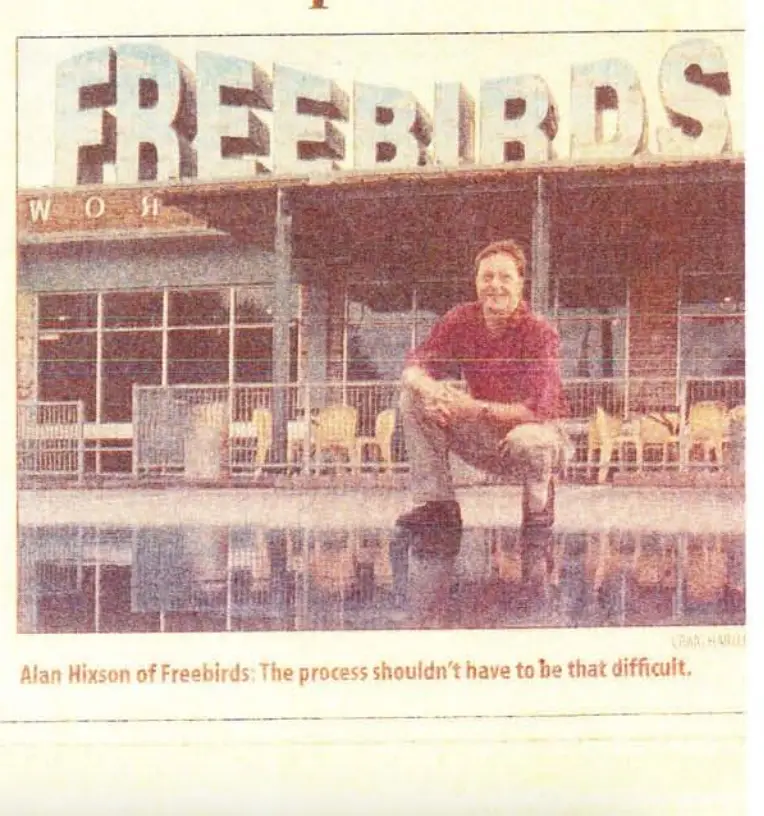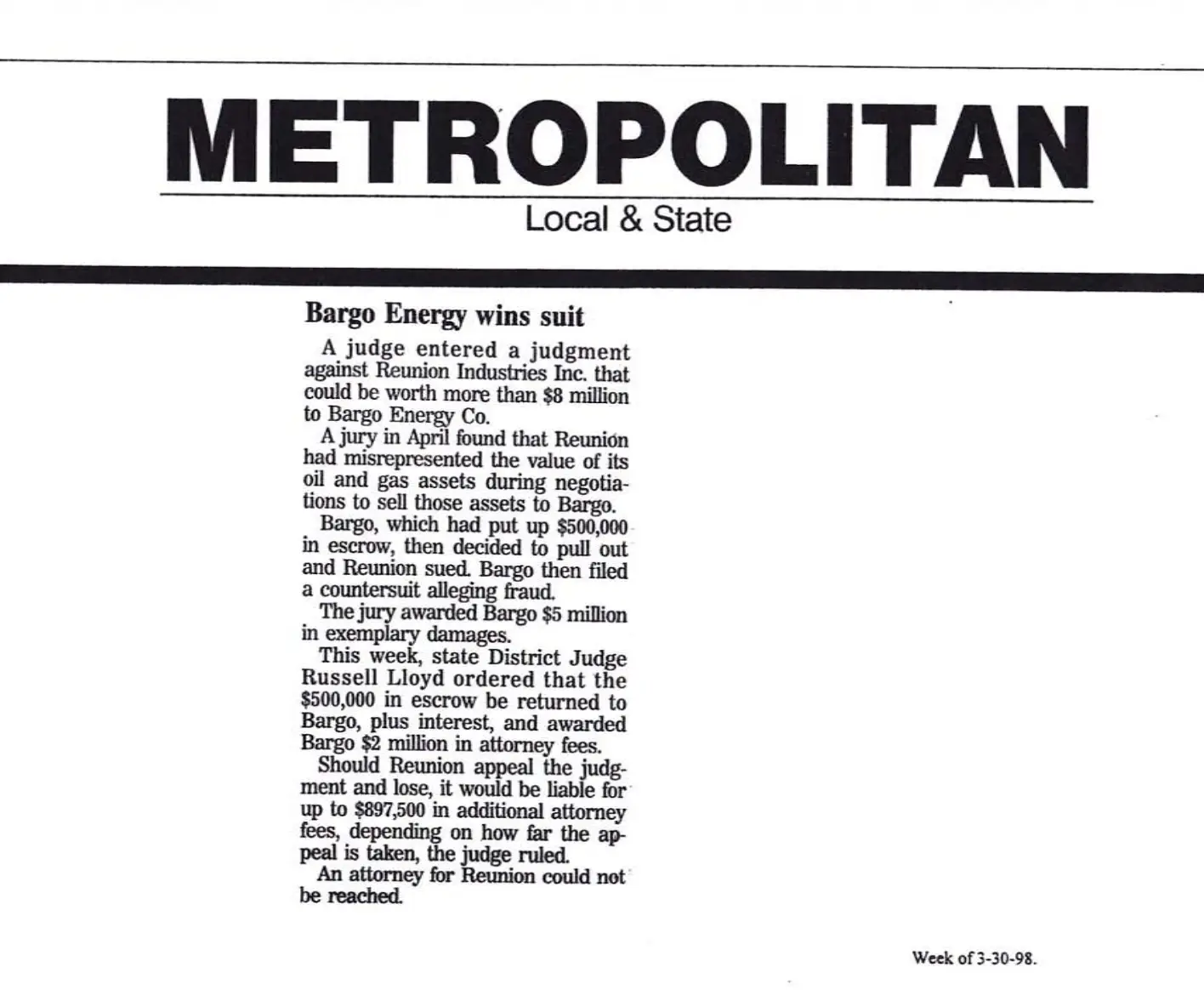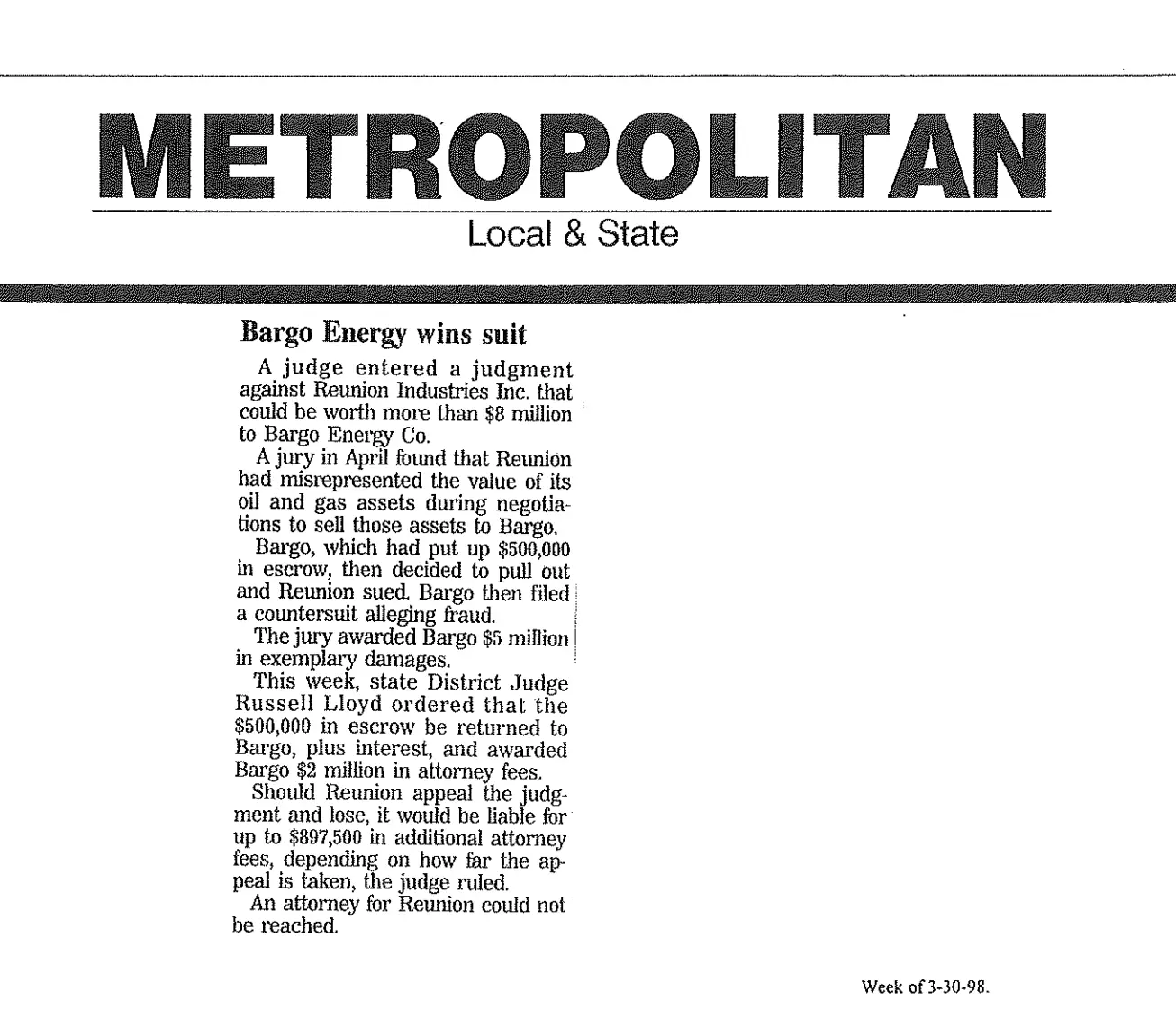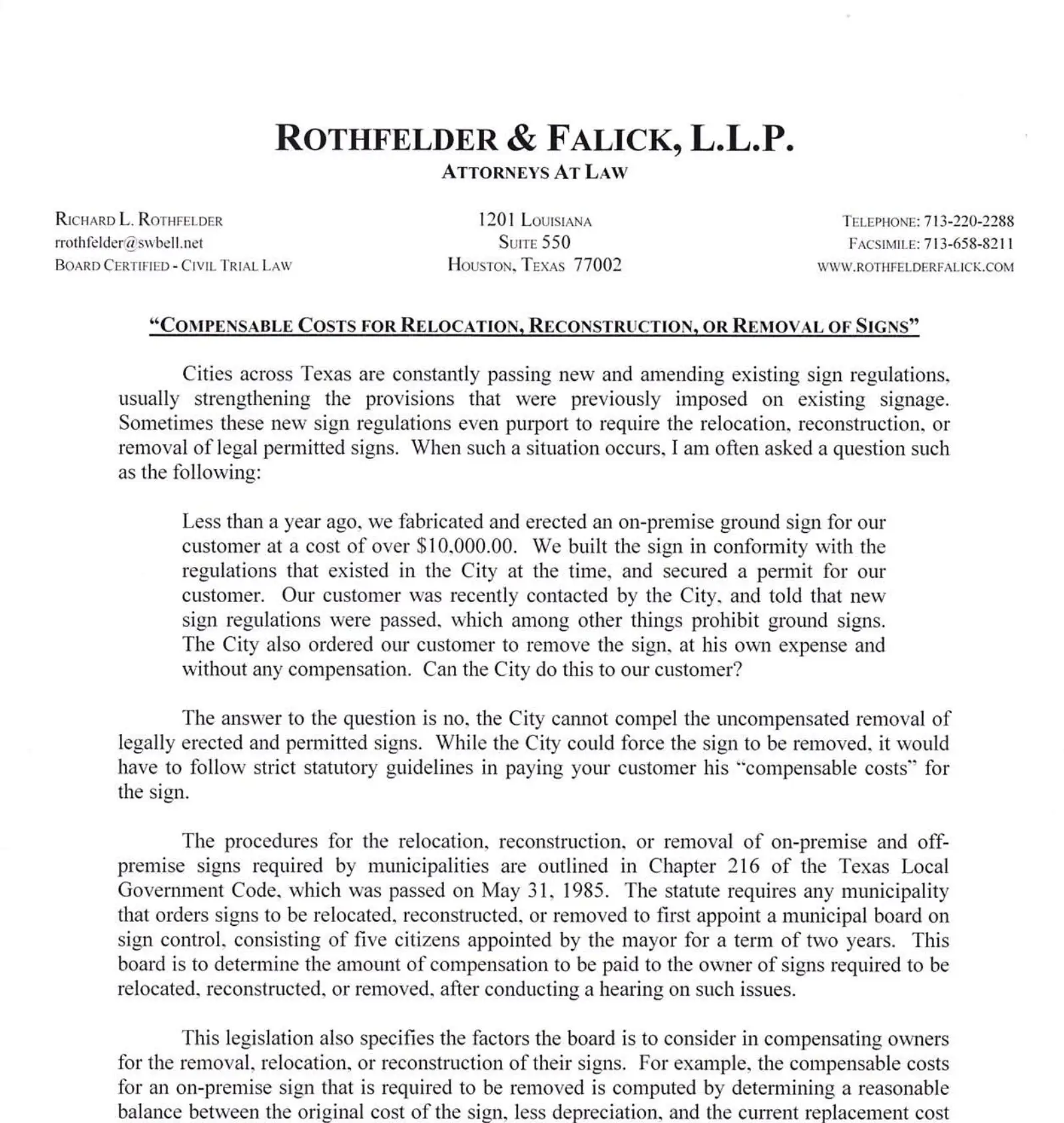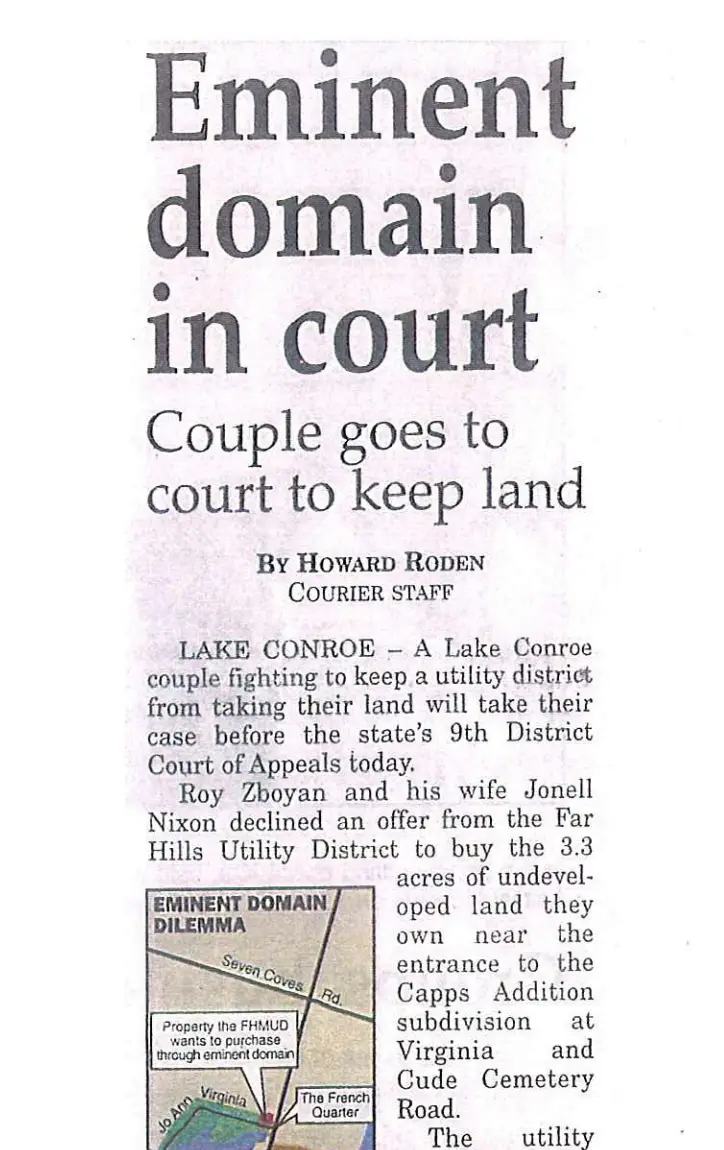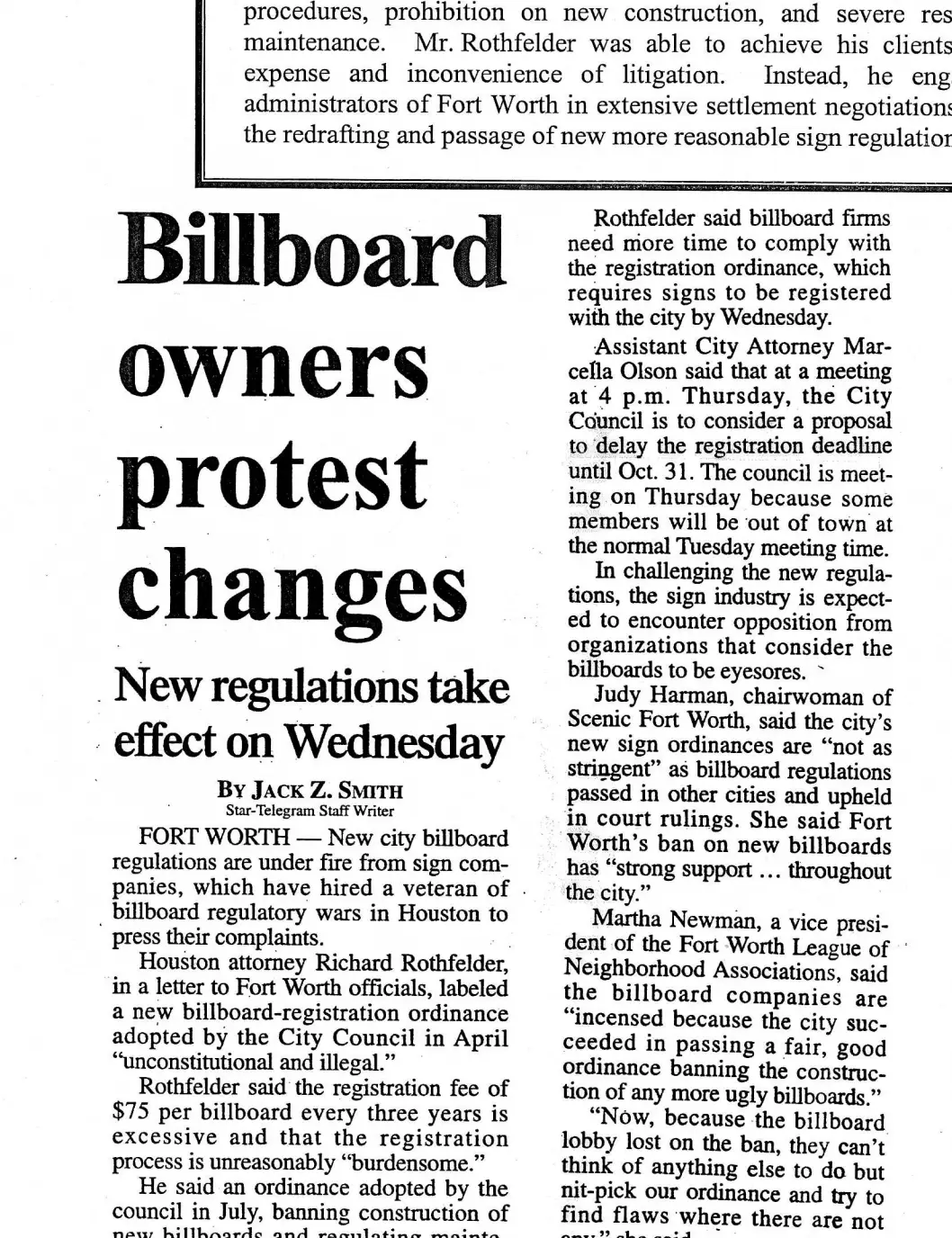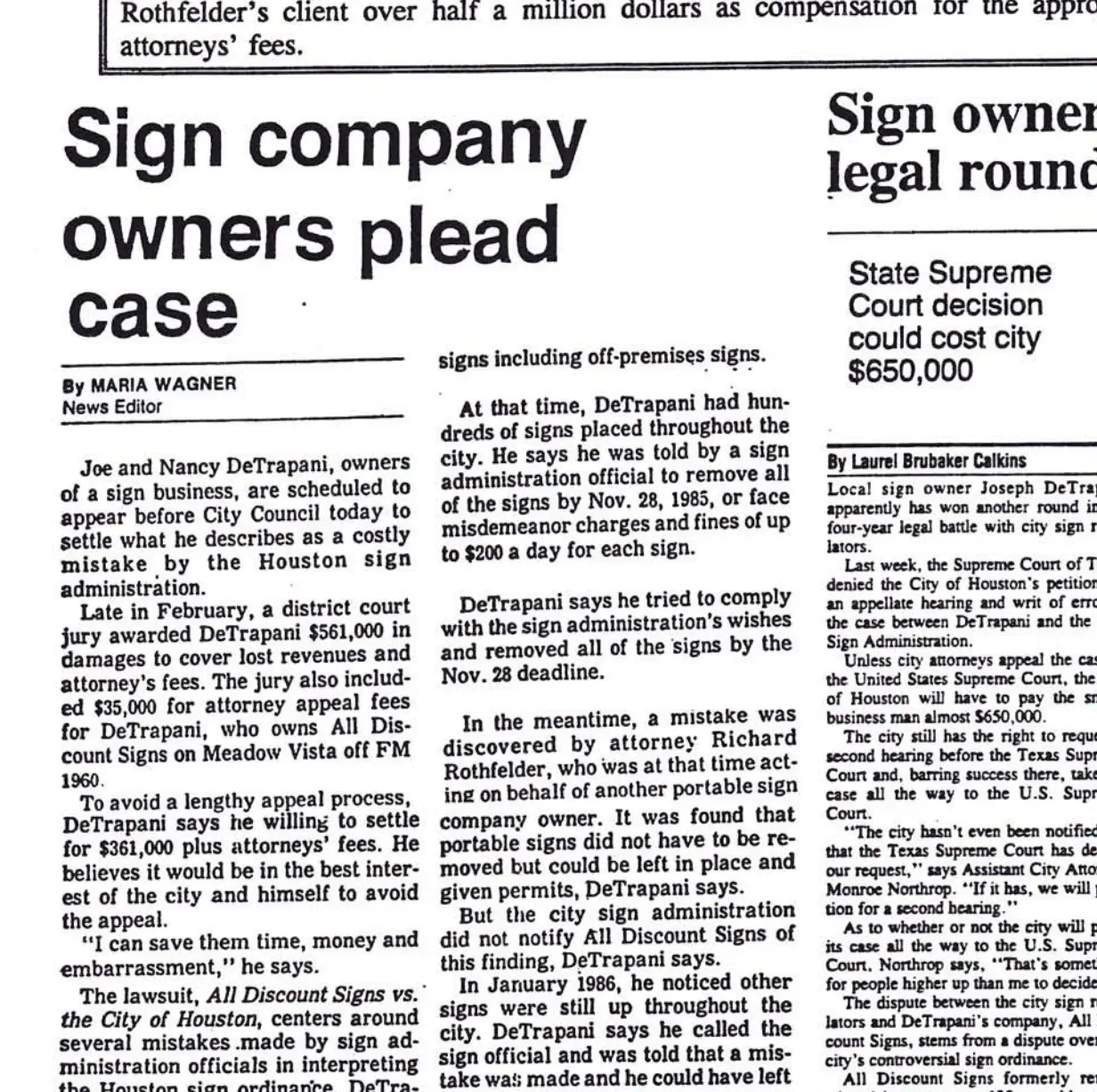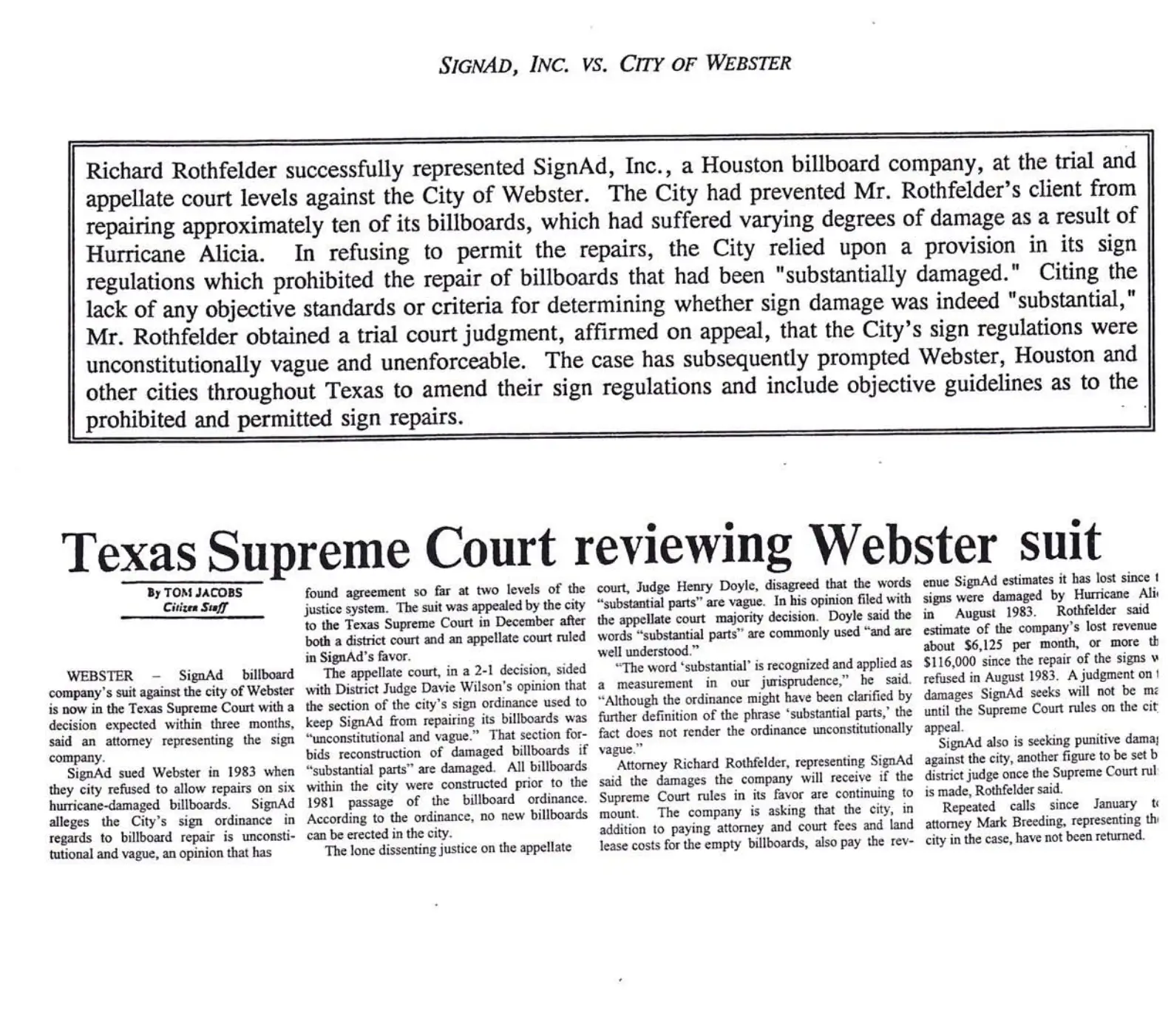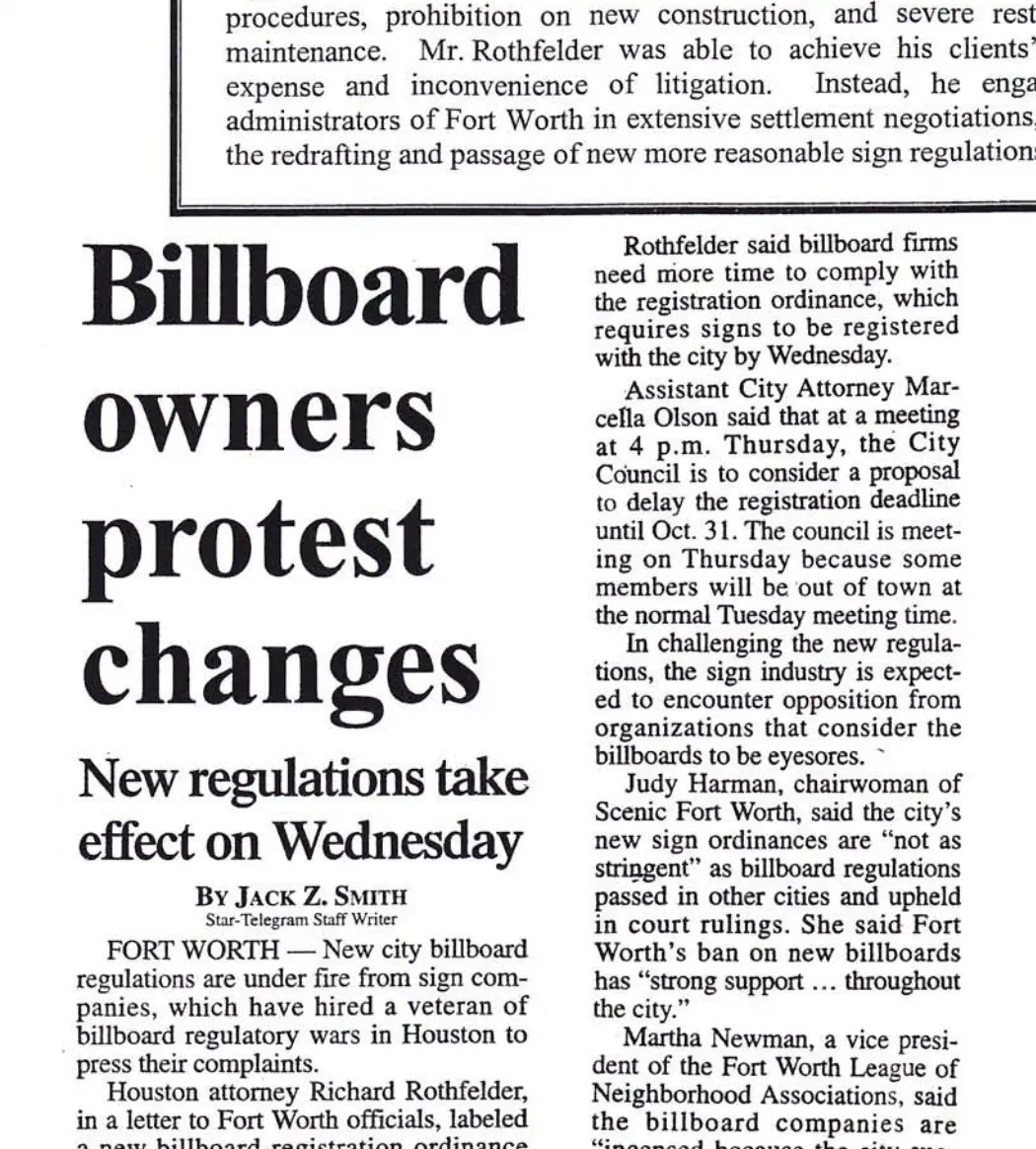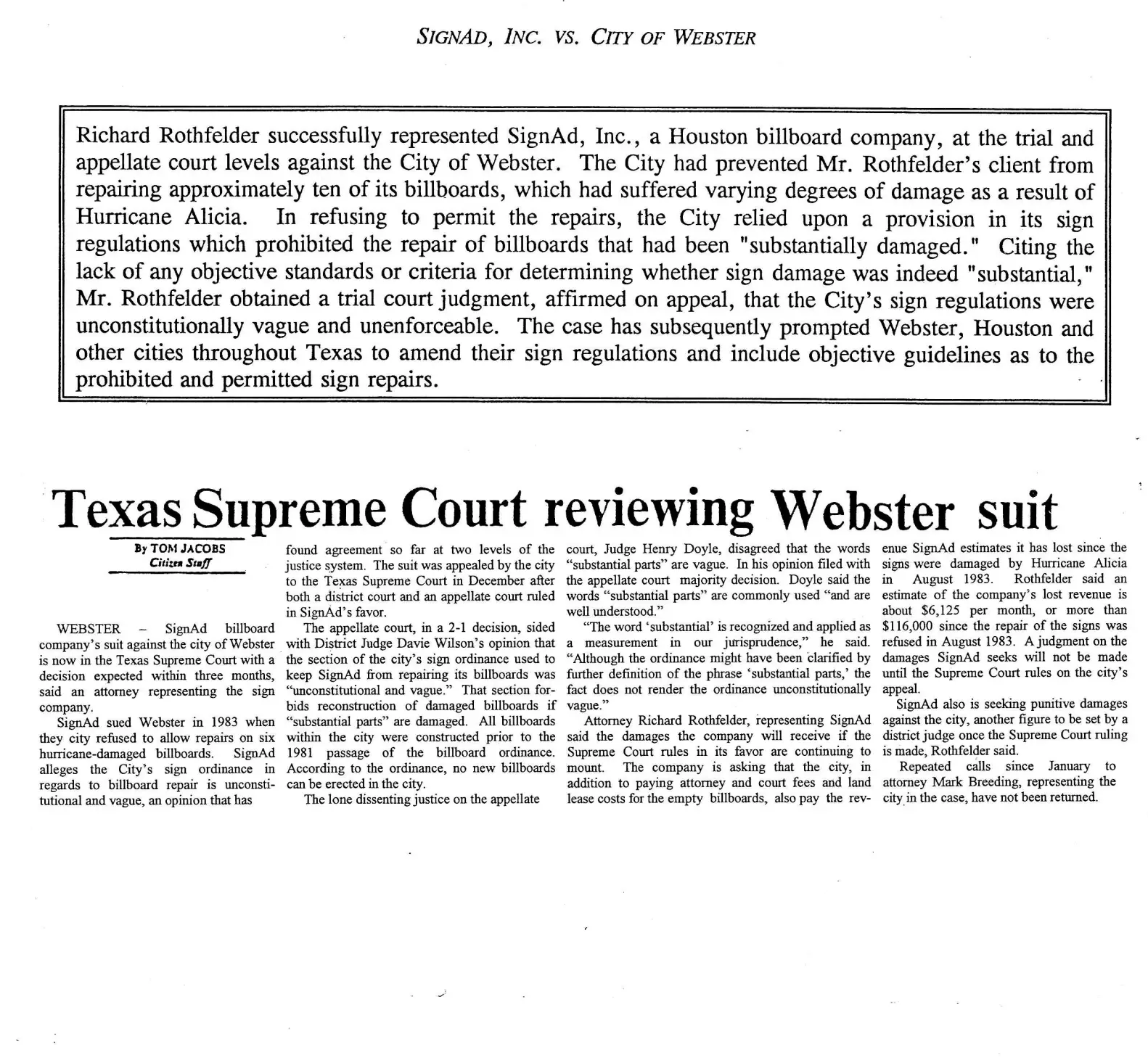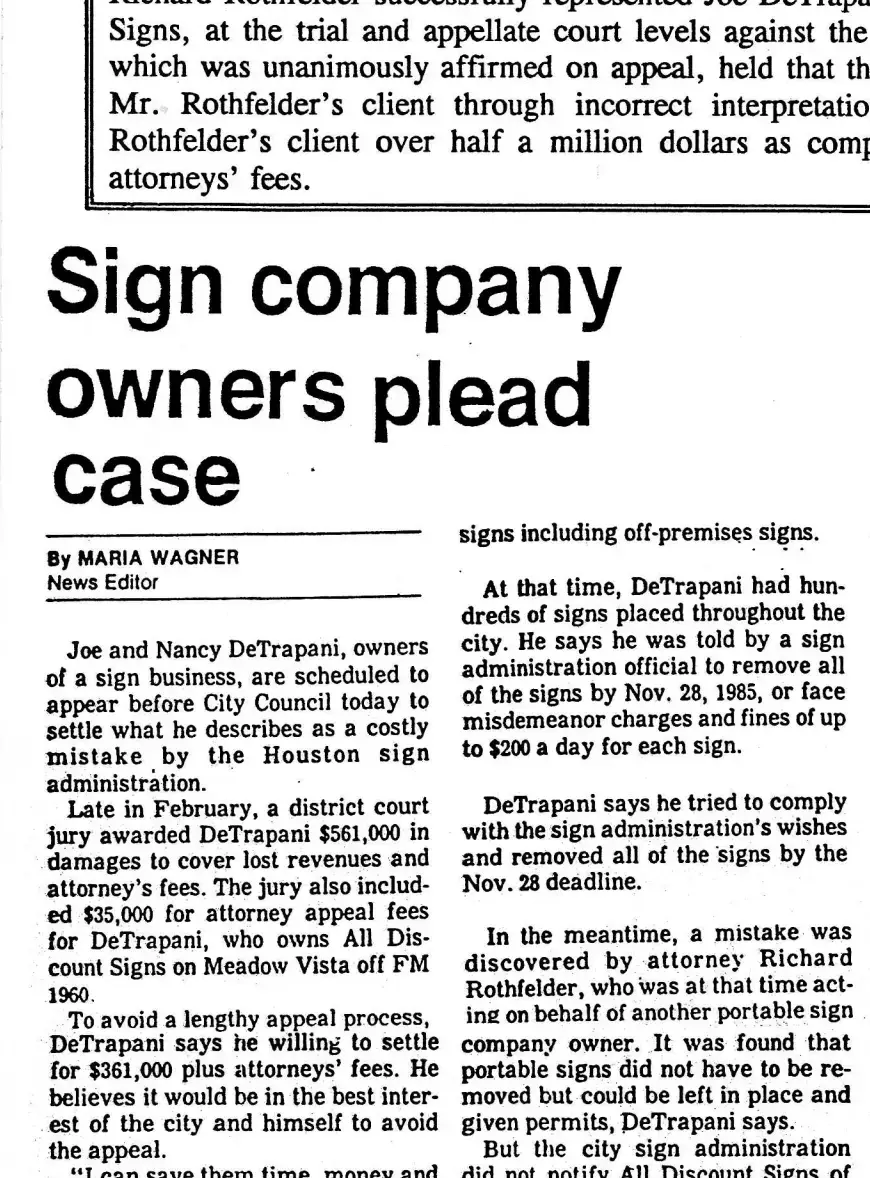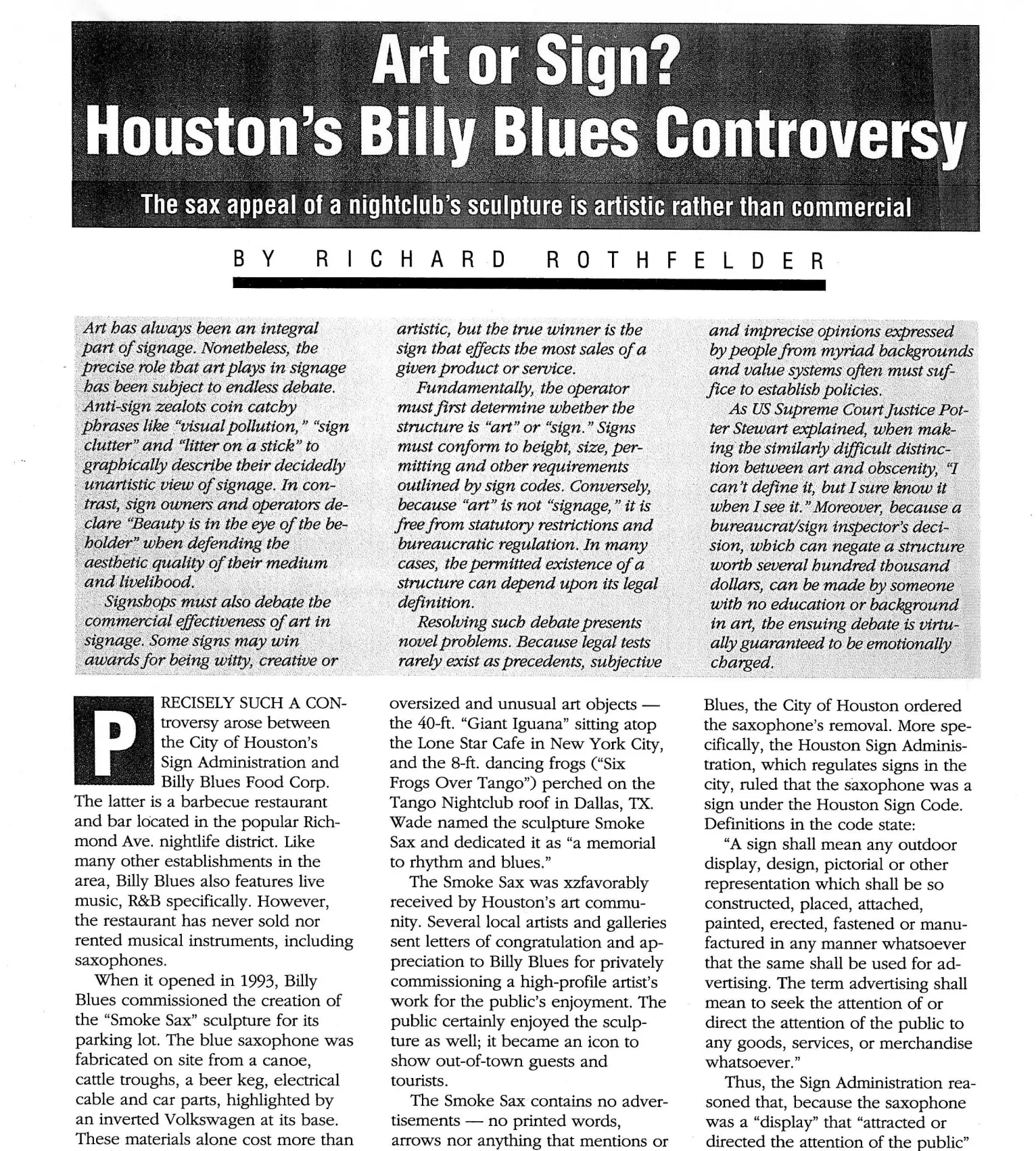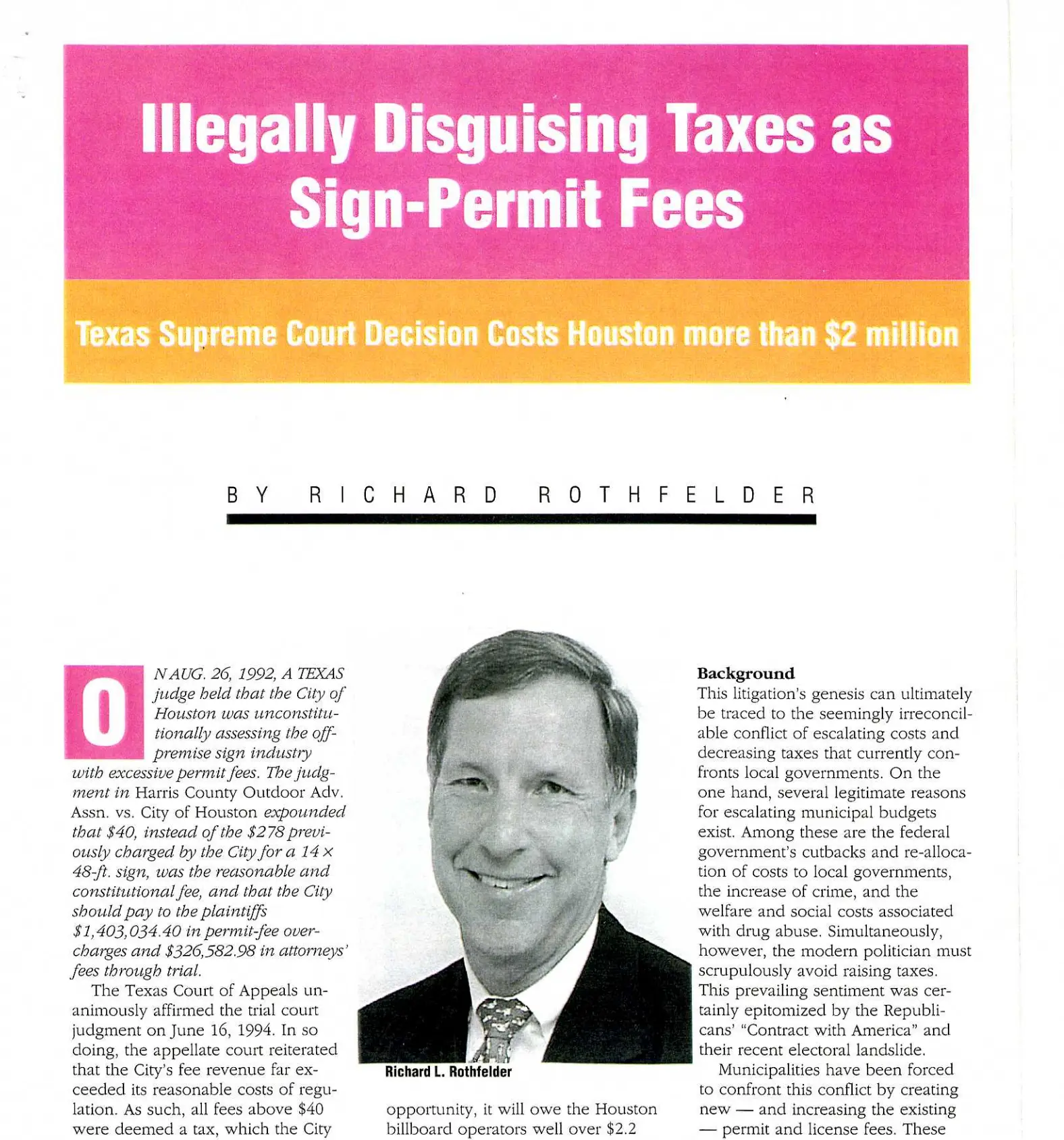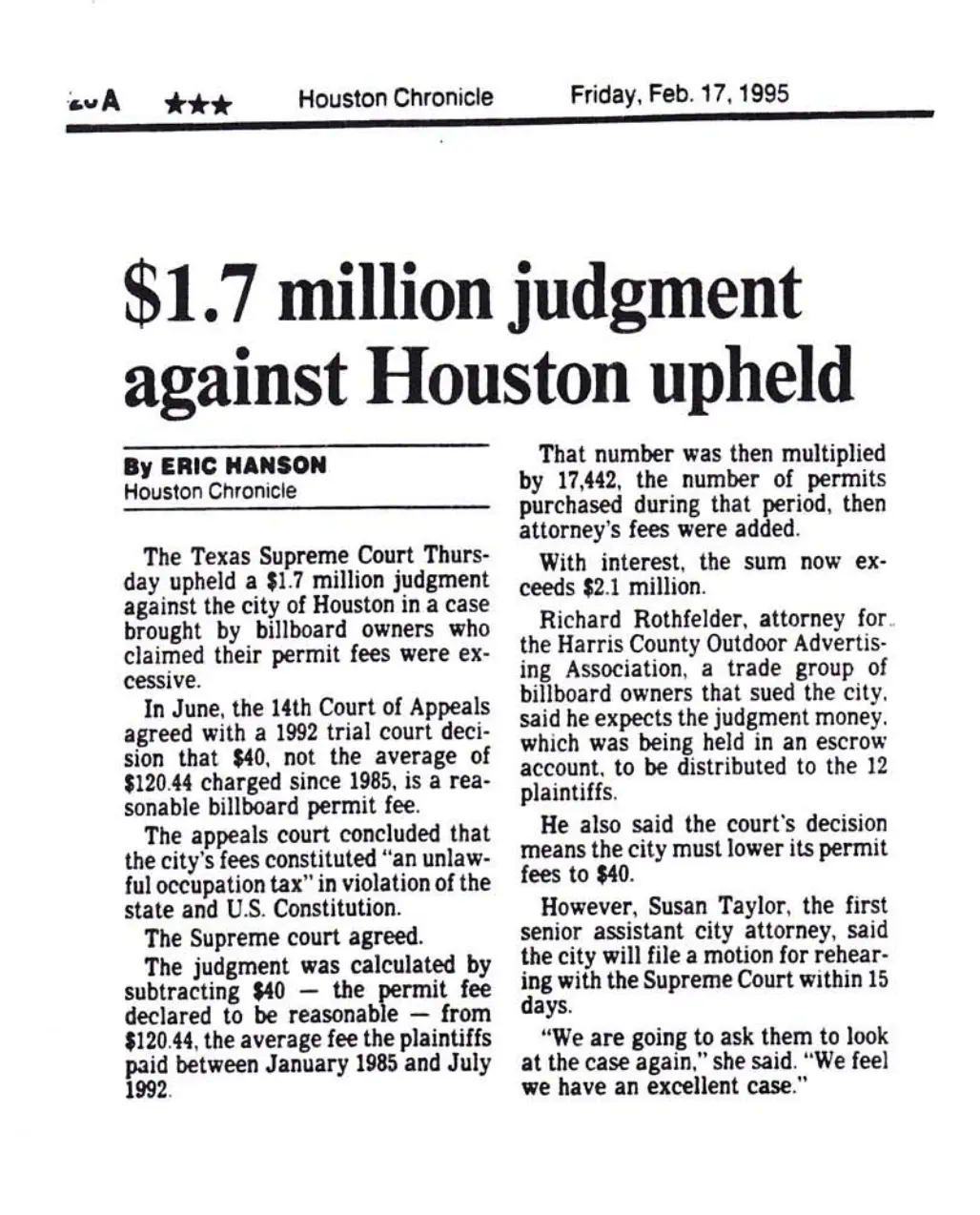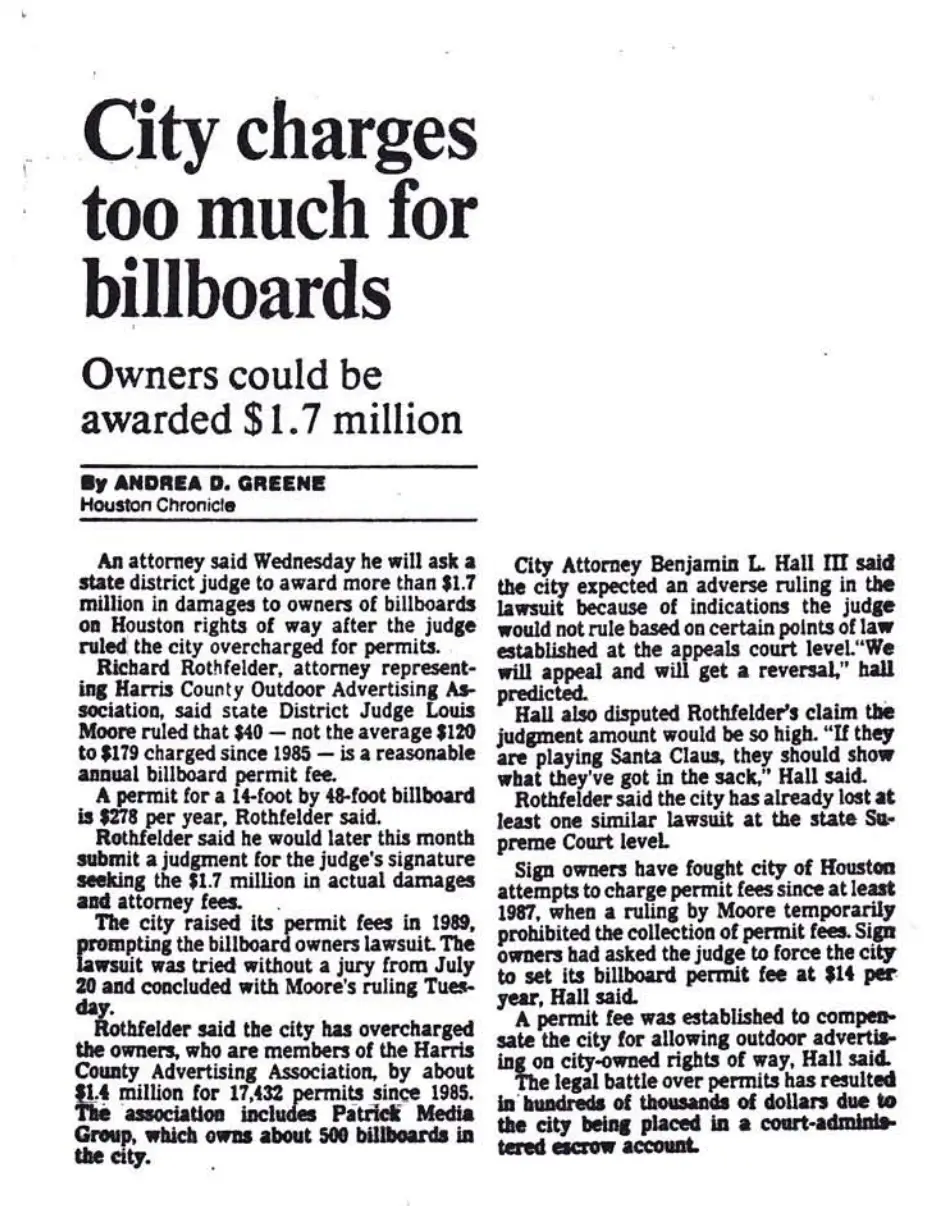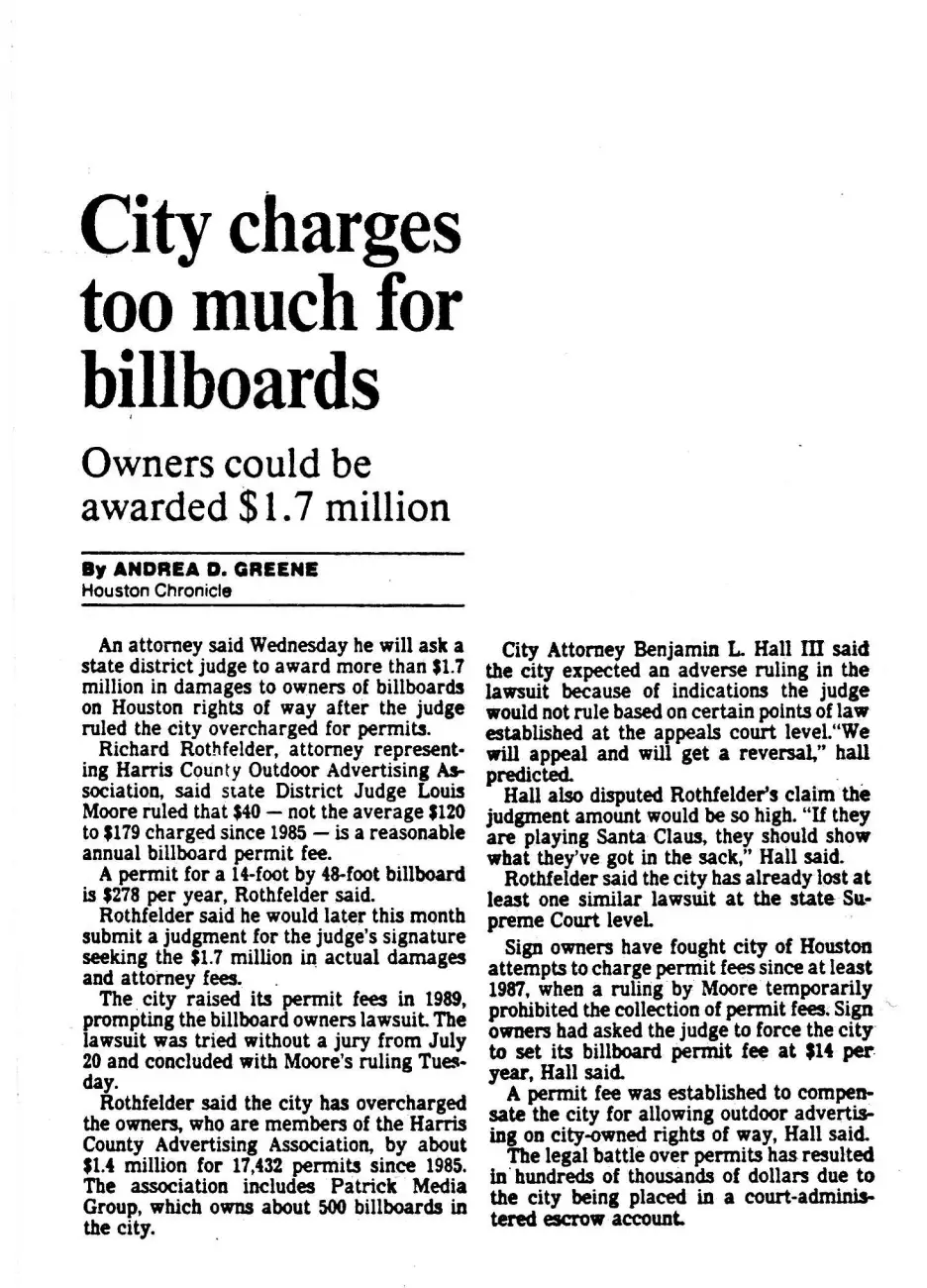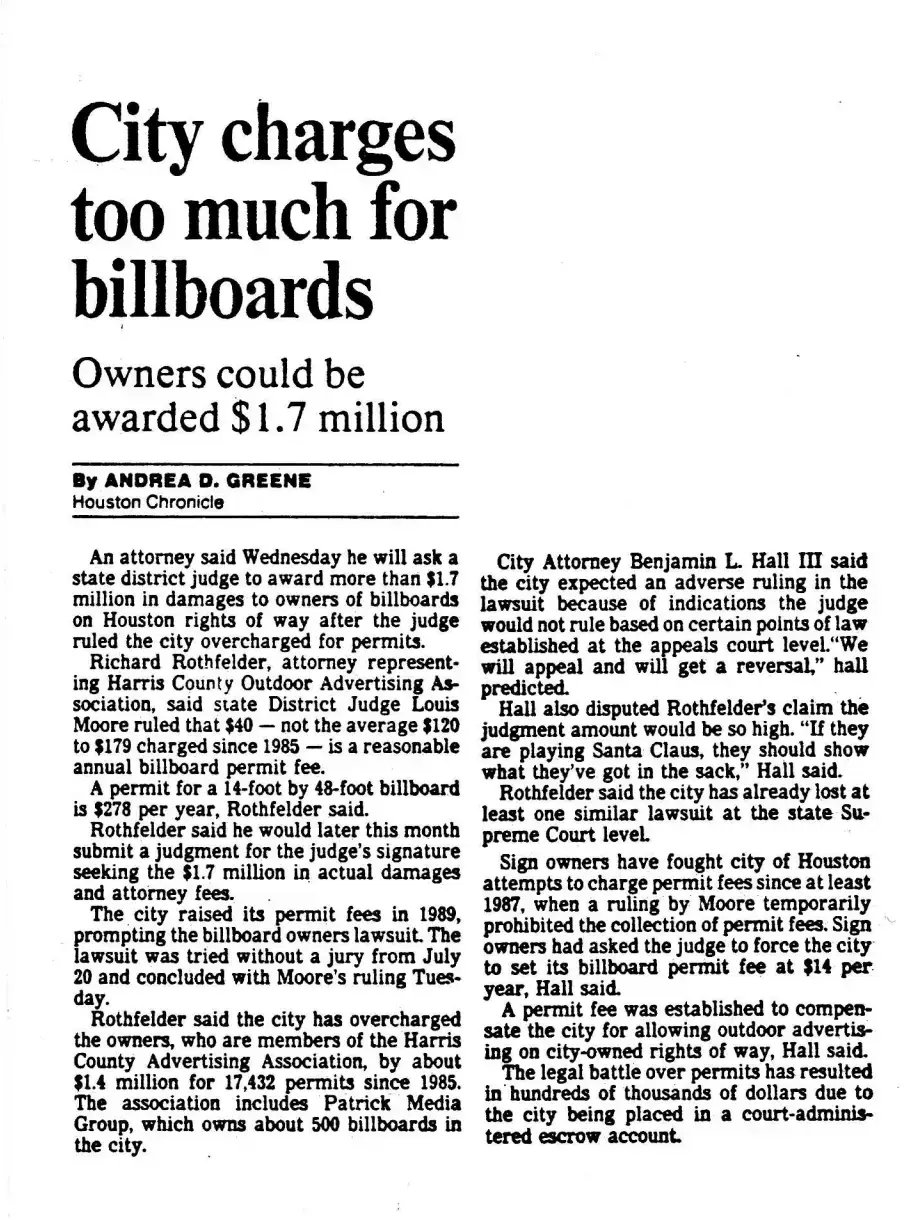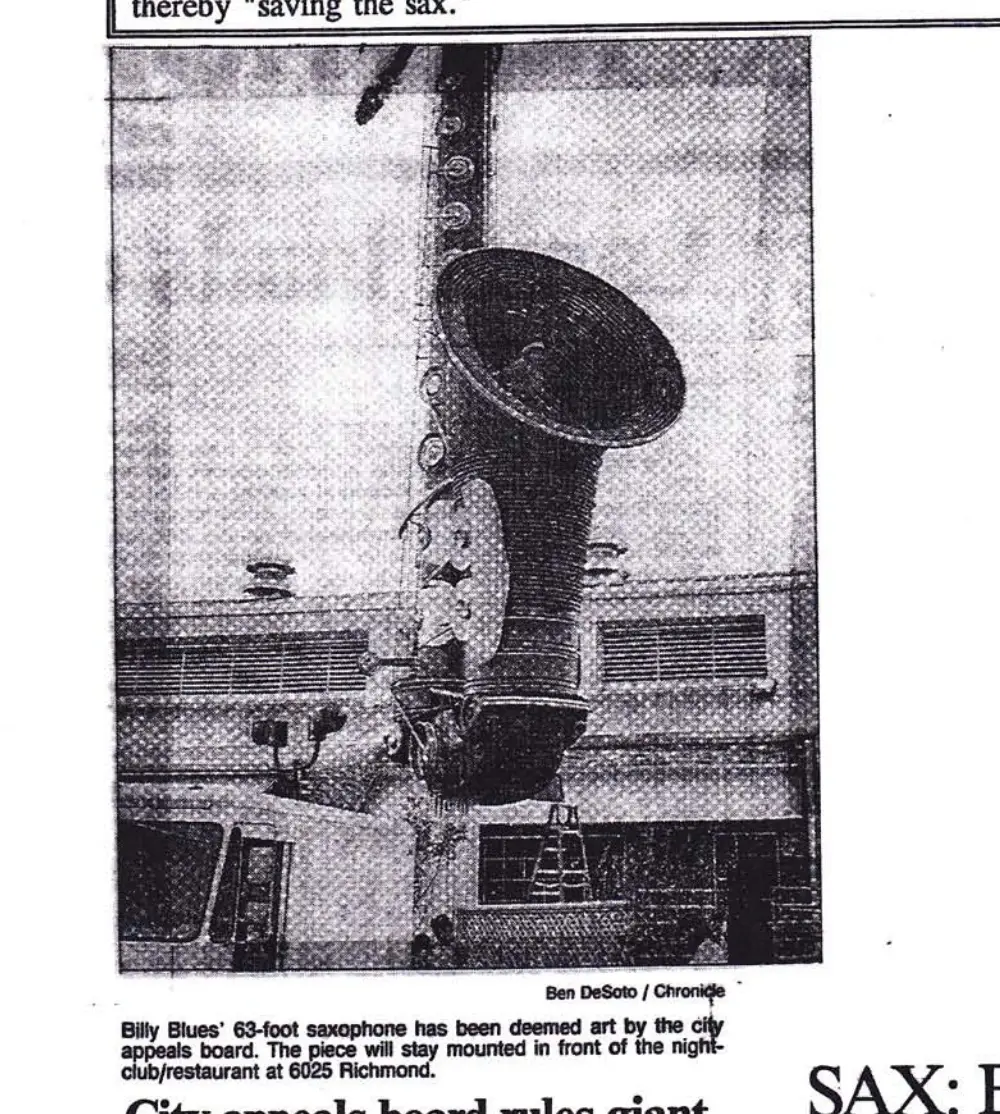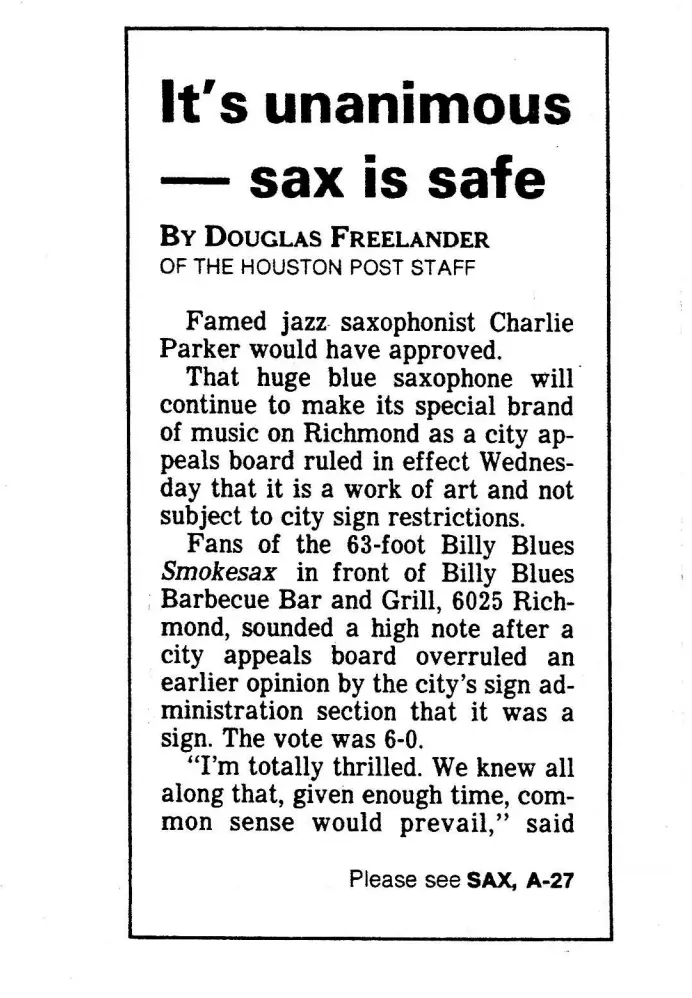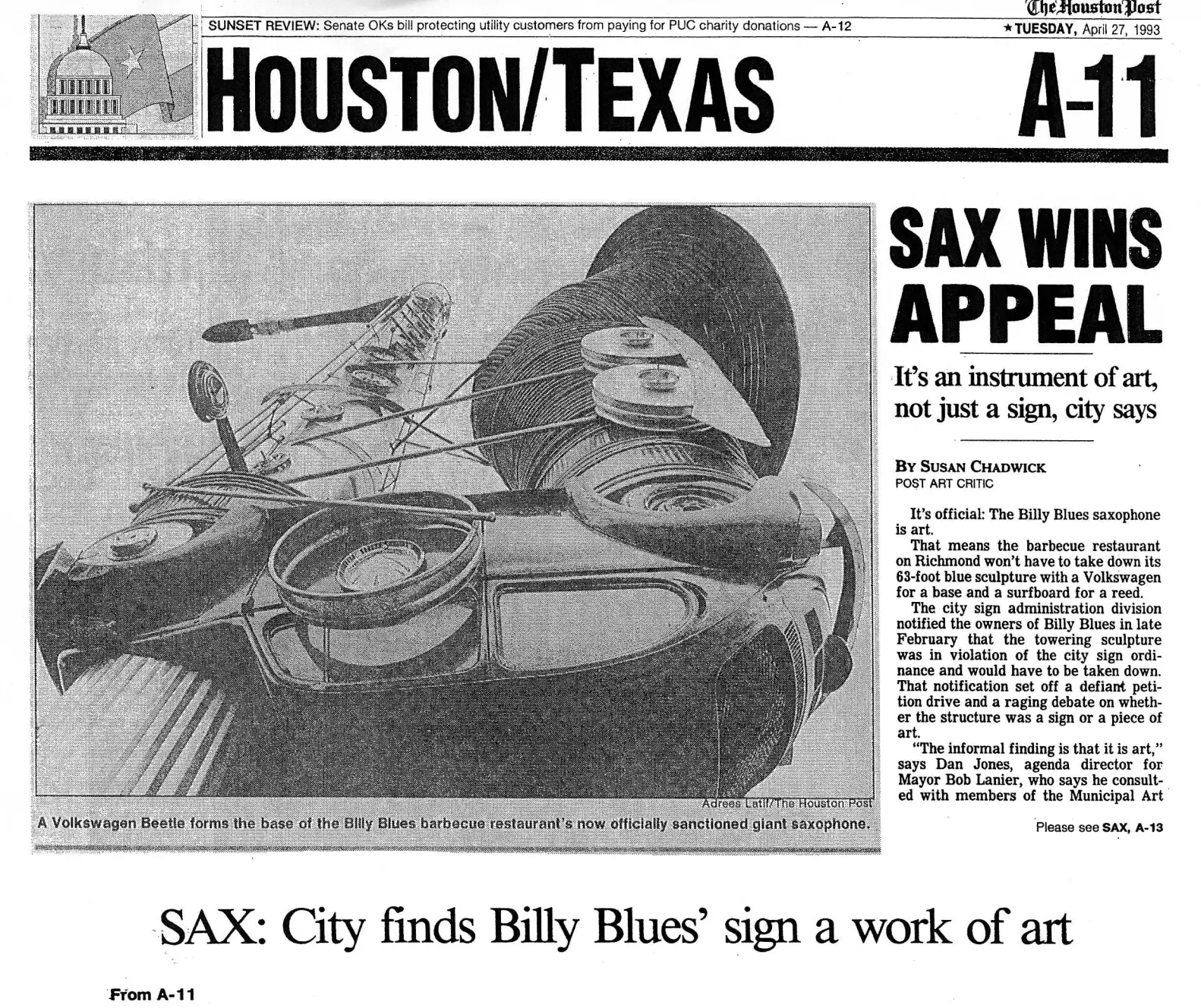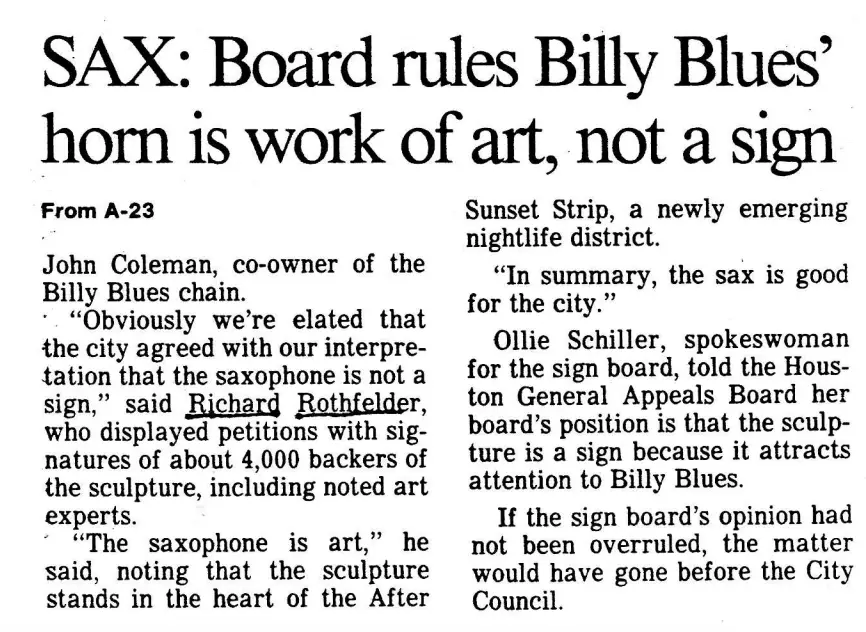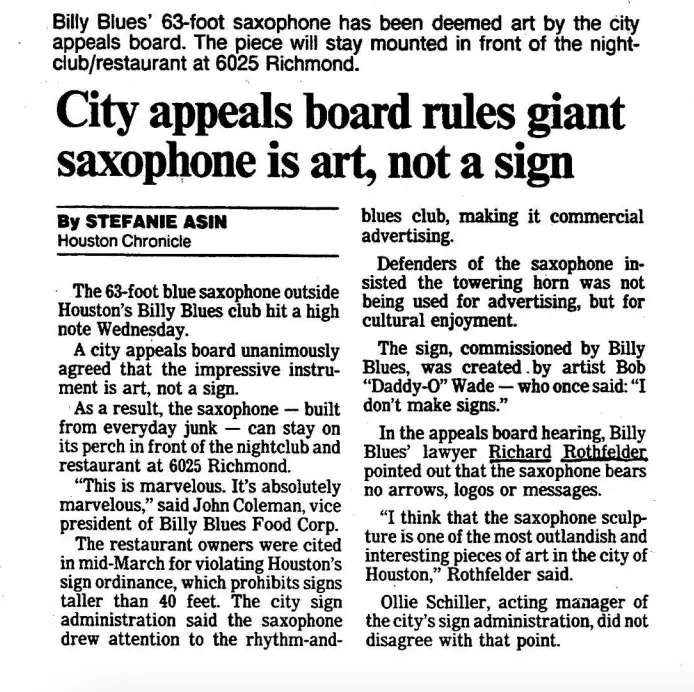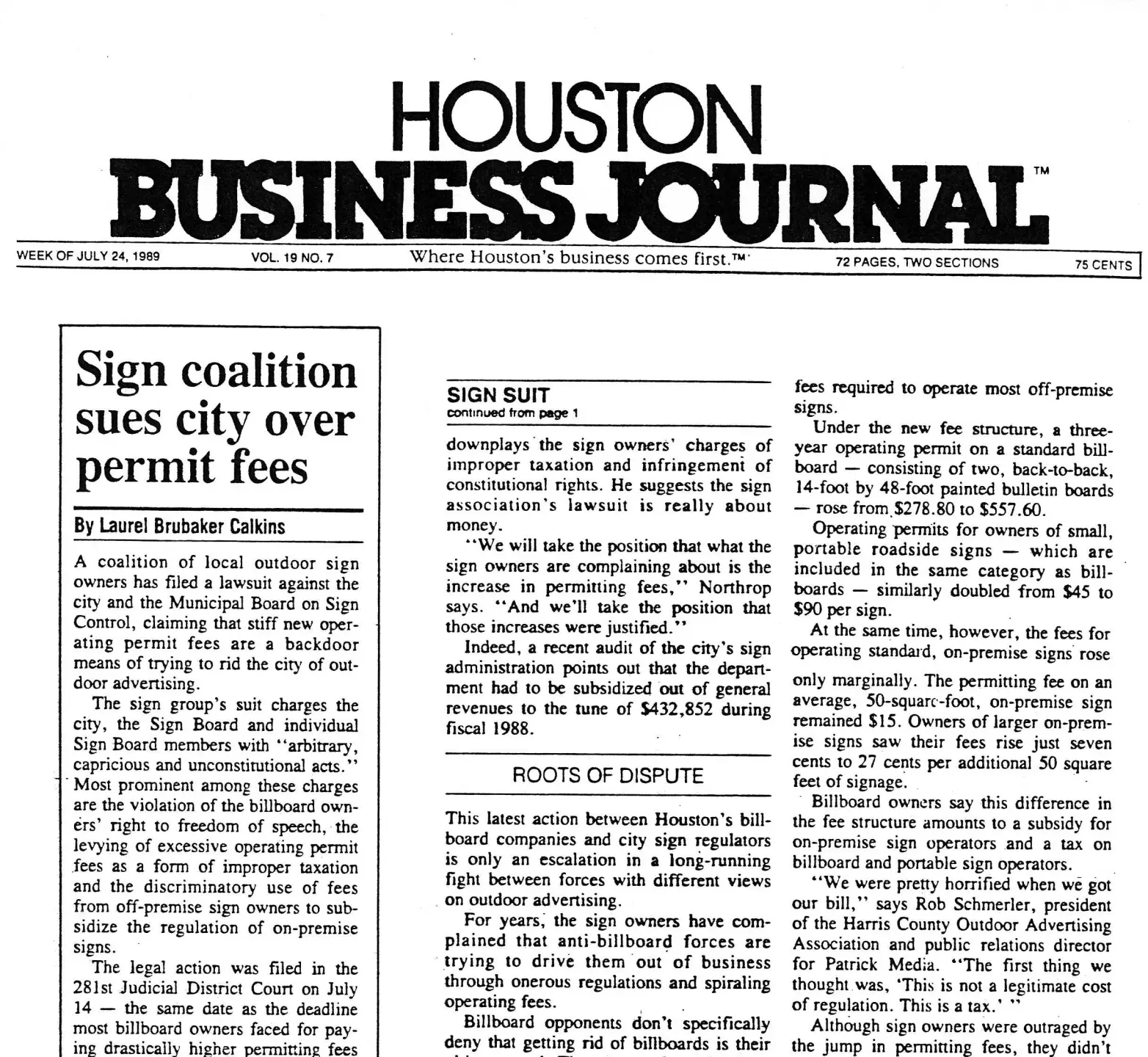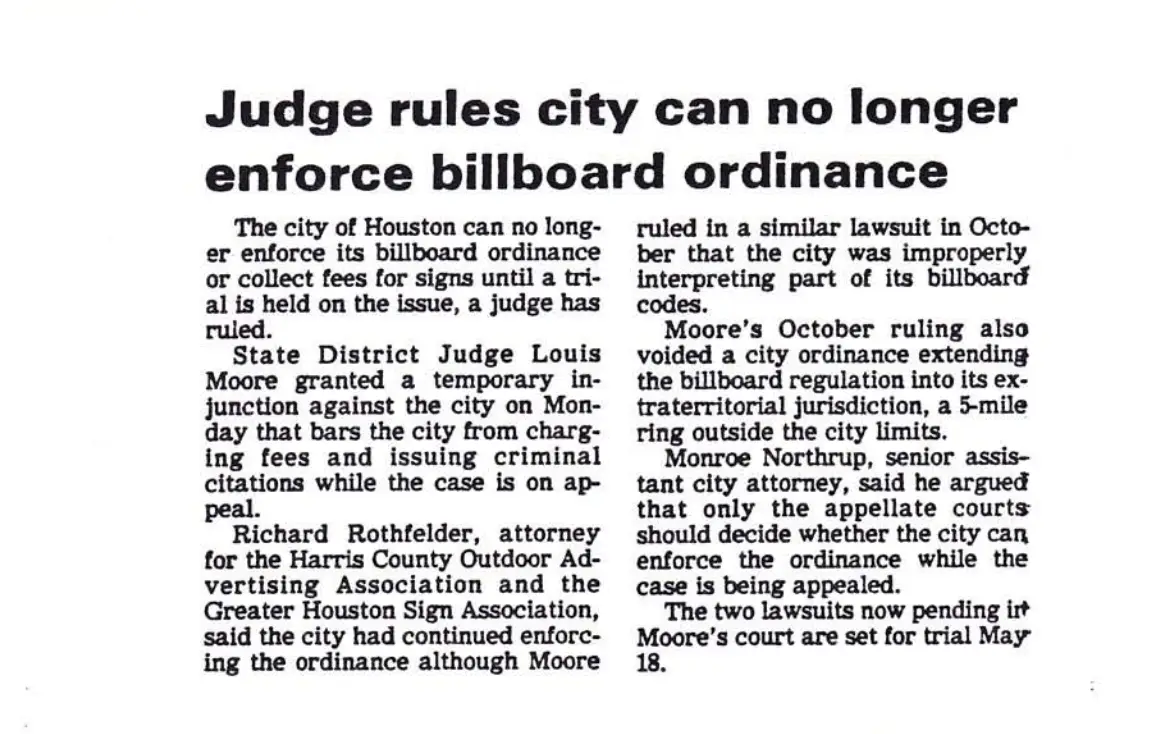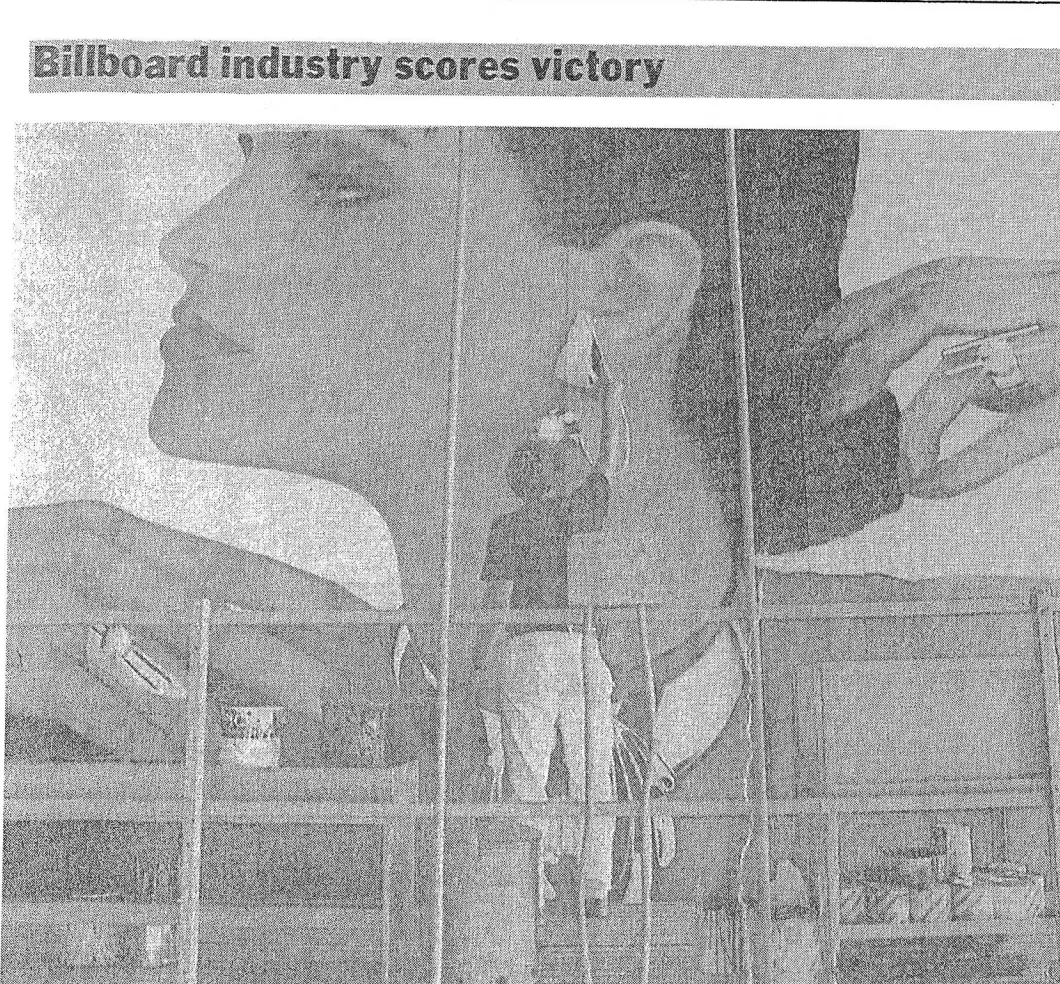A Great Team and Winning Mindset
Rothfelder & Falick’s lawyers are experienced in civil litigation and business transactions. In addition, the Firm has developed expertise in specific areas of litigation, including business litigation and governmental regulation. We frequently represent clients in mergers and acquisitions involving out of home and related assets located across the country.
A Great Team and Winning Mindset
Rothfelder & Falick’s lawyers are experienced in civil litigation and business transactions. In addition, the Firm has developed expertise in specific areas of litigation, including business litigation and governmental regulation. We frequently represent clients in mergers and acquisitions involving out of home and related assets located across the country.


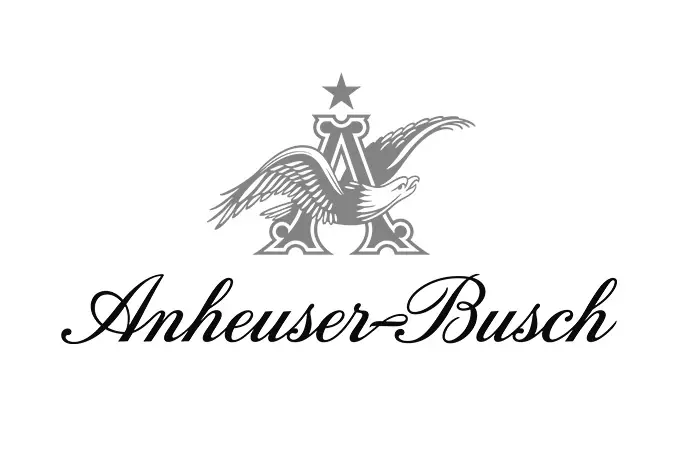
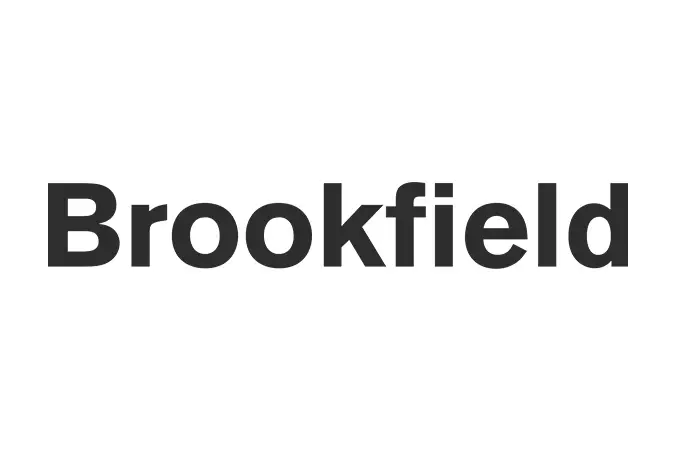

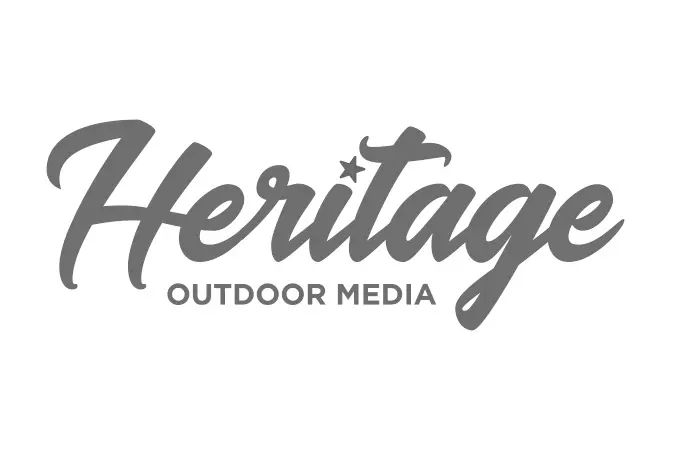





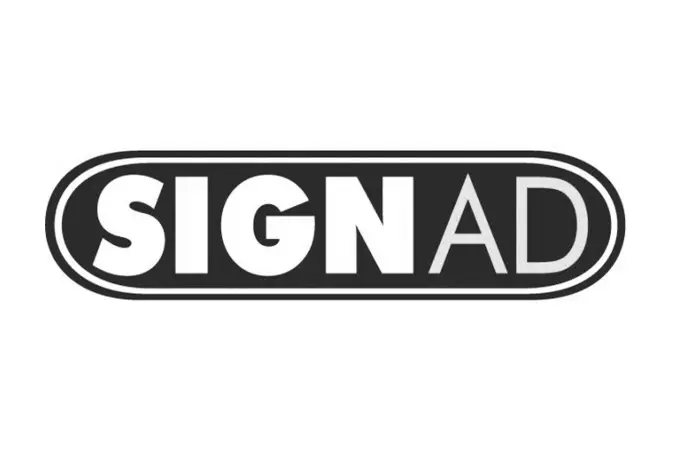

Our Attorneys
Richard L. Rothfelder
Richard L. Rothfelder has been board certified in civil trial law by the Texas Board of Legal Specialization since 1989. He has handled over 100 trials and appeals in state, administrative and federal courts, emphasizing business litigation and governmental regulation. Mr. Rothfelder is also a nationally recognized expert in the representation of the outdoor advertising and sign industries. Mr. Rothfelder attended the University of Kansas, where he was a member of Phi Beta Kappa, a Summerfield Scholar, and graduated “With Distinction” in 1976. He graduated Cum Laude in 1979 from the University of Houston Law School, where he served on the Houston Law Review and the Order of the Barons.
Mr. Rothfelder possesses an “AV” Prominent Attorney rating from Martindale-Hubbell Law Directory, the highest legal ability recommendation rating granted by the national publication. He has received numerous other recognitions and awards, including “Super Lawyer” from the Texas Lawyer, “Top Rated Lawyer” from the Dallas Morning News, “Americas Most Honored Professionals” from Martindale-Hubbell, and “Resolution” recognition by the Texas Senate.
Mr. Rothfelder has authored and/or presented over 200 articles at legal functions and political forums. Some of his published articles are found under the Firm’s website for publications, articles, and cases. Mr. Rothfelder is civically active, having served 12 years as the Mayor of the City of Southside Place, four more years as a Councilman, and currently as its City Attorney.
Mr. Rothfelder is also a Trustee and the Treasurer of the Houston Regional Business Coalition, a Fellow of the Texas Bar Foundation, and a volunteer Court Appointed Child Advocate. He is a past president of the Harris County Mayors and Councils Association and the West University Elementary School Foundation, former General Counsel to the Air Force Escape and Evasion Society, and a former member of the Board of Advisors of the University of Kansas College of Liberal Arts and Sciences.
Michael C. Falick
Michael C. Falick specializes in trial and appellate litigation, with an emphasis on commercial disputes, including condemnation, oil and gas, UCC and contract disputes, securities law, real estate, collections, labor law, trade secrets, business torts, and banking.
Mr. Falick was raised in Houston where he graduated from St. John’s School in 1983. Mr. Falick subsequently attended Tulane University’s A. B. Freeman School of Business, where he graduated with a business degree in 1987. He graduated from South Texas College of Law in 1990, where he was recognized for outstanding contributions for his service to the Board of Advocates. Mr. Falick commenced his legal practice in 1991.
Mr. Falick has been very active in his community serving as a School Board Trustee in Spring Branch ISD from 2004 – 2013, including serving as the Board’s President in 2007-2008 and 2010-2011. Mr. Falick and his wife, Julie, both grew up in Spring Branch and raised their children, Avery and Stephen, in Spring Branch.
Christopher W. Rothfelder
Mr. Rothfelder joined the firm and practice of law after graduating Cum Laude from South Texas College of Law in 2013. While a student at South Texas, Mr. Rothfelder excelled as a member of the South Texas Law Review, was named to the Dean’s List, and competed in tournaments around the country as a varsity advocate for the school’s mock trial team. In recognition of his dedication to the mock trial program, Mr. Rothfelder was named to the Order of the Barristers and received the Dean’s Advocacy Service Award. Mr. Rothfelder taught a course in mock trial litigation at South Texas College of Law as an adjunct professor for several years
Prior to attending South Texas, Mr. Rothfelder graduated from the University of Texas at Austin, where he received his B.A. in Government. While in law school, Mr. Rothfelder worked as an intern for the Harris County District Attorney’s Office, as well as the Fourteenth Court of Appeals now under Chief Justice Kem Thompson Frost.
Mr. Rothfelder’s practice focuses on business litigation, condemnation, commercial transactions, and administrative disputes. Mr. Rothfelder additionally represents out of home sign companies and owners in every facet of the industry. He frequently represents buyers and sellers in the acquisition and divestiture of out of home assets located across the country. Mr. Rothfelder also represents clients in landlord-tenant and similar contractual disputes. He also assists industry participants in disputes with governmental entities, including eminent domain, permit applications and violations, and First Amendment litigation.
Richard L. Rothfelder
Richard L. Rothfelder has been board certified in civil trial law by the Texas Board of Legal Specialization since 1989. He has handled over 100 trials and appeals in state, administrative and federal courts, emphasizing business litigation and governmental regulation. Mr. Rothfelder is also a nationally recognized expert in the representation of the outdoor advertising and sign industries. Mr. Rothfelder attended the University of Kansas, where he was a member of Phi Beta Kappa, a Summerfield Scholar, and graduated “With Distinction” in 1976. He graduated Cum Laude in 1979 from the University of Houston Law School, where he served on the Houston Law Review and the Order of the Barons.
Mr. Rothfelder possesses an “AV” Prominent Attorney rating from Martindale-Hubbell Law Directory, the highest legal ability recommendation rating granted by the national publication. He has received numerous other recognitions and awards, including “Super Lawyer” from the Texas Lawyer, “Top Rated Lawyer” from the Dallas Morning News, “Americas Most Honored Professionals” from Martindale-Hubbell, and “Resolution” recognition by the Texas Senate.
Mr. Rothfelder has authored and/or presented over 200 articles at legal functions and political forums. Some of his published articles are found under the Firm’s website for publications, articles, and cases. Mr. Rothfelder is civically active, having served 12 years as the Mayor of the City of Southside Place, four more years as a Councilman, and currently as its City Attorney.
Mr. Rothfelder is also a Trustee and the Treasurer of the Houston Regional Business Coalition, a Fellow of the Texas Bar Foundation, and a volunteer Court Appointed Child Advocate. He is a past president of the Harris County Mayors and Councils Association and the West University Elementary School Foundation, former General Counsel to the Air Force Escape and Evasion Society, and a former member of the Board of Advisors of the University of Kansas College of Liberal Arts and Sciences.
Michael C. Falick
Michael C. Falick specializes in trial and appellate litigation, with an emphasis on commercial disputes, including condemnation, oil and gas, UCC and contract disputes, securities law, real estate, collections, labor law, trade secrets, business torts, and banking.
Mr. Falick was raised in Houston where he graduated from St. John’s School in 1983. Mr. Falick subsequently attended Tulane University’s A. B. Freeman School of Business, where he graduated with a business degree in 1987. He graduated from South Texas College of Law in 1990, where he was recognized for outstanding contributions for his service to the Board of Advocates. Mr. Falick commenced his legal practice in 1991.
Mr. Falick has been very active in his community serving as a School Board Trustee in Spring Branch ISD from 2004 – 2013, including serving as the Board’s President in 2007-2008 and 2010-2011. Mr. Falick and his wife, Julie, both grew up in Spring Branch and raised their children, Avery and Stephen, in Spring Branch.
Christopher W. Rothfelder
Mr. Rothfelder joined the firm and practice of law after graduating Cum Laude from South Texas College of Law in 2013. While a student at South Texas, Mr. Rothfelder excelled as a member of the South Texas Law Review, was named to the Dean’s List, and competed in tournaments around the country as a varsity advocate for the school’s mock trial team. In recognition of his dedication to the mock trial program, Mr. Rothfelder was named to the Order of the Barristers and received the Dean’s Advocacy Service Award. Mr. Rothfelder taught a course in mock trial litigation at South Texas College of Law as an adjunct professor for several years
Prior to attending South Texas, Mr. Rothfelder graduated from the University of Texas at Austin, where he received his B.A. in Government. While in law school, Mr. Rothfelder worked as an intern for the Harris County District Attorney’s Office, as well as the Fourteenth Court of Appeals now under Chief Justice Kem Thompson Frost.
Mr. Rothfelder’s practice focuses on business litigation, condemnation, commercial transactions, and administrative disputes. Mr. Rothfelder additionally represents out of home sign companies and owners in every facet of the industry. He frequently represents buyers and sellers in the acquisition and divestiture of out of home assets located across the country. Mr. Rothfelder also represents clients in landlord-tenant and similar contractual disputes. He also assists industry participants in disputes with governmental entities, including eminent domain, permit applications and violations, and First Amendment litigation.
Our Focus is Our Clients
The Firm’s business litigation expertise includes contract and UCC disputes, arbitration and mediation, labor law, business torts, tax, proprietary information, securities, oil and gas, banking, collections, and real estate.
Our governmental regulation practice includes eminent domain and inverse condemnation, permits and licenses, land use, zoning, deed restrictions, variances, special exceptions, and constitutional disputes.
The Firm’s business litigation expertise includes contract and UCC disputes, arbitration and mediation, labor law, business torts, tax, proprietary information, securities, oil and gas, banking, collections, and real estate.
Our governmental regulation practice includes eminent domain and inverse condemnation, permits and licenses, land use, zoning, deed restrictions, variances, special exceptions, and constitutional disputes.
Areas of Practice

Business Litigation
Business litigation refers to legal disputes between companies or individuals involving contracts, transactions, or other commercial matters in court.

Civil
Litigation
Civil litigation involves legal disputes between individuals or entities over rights, obligations, or liabilities, typically resolved through court proceedings.

Government Regulation
Government regulation refers to rules and laws established by authorities to control business practices, protect public interest, and ensure fairness.

Arbitration and Mediation
Arbitration and mediation are alternative dispute resolution methods where neutral third parties help parties resolve conflicts outside court proceedings.

Banking
Banking refers to establishing legal parameters, regulations, and rights governing financial institutions, transactions, and consumer protections.

Business Torts
Business torts are wrongful acts harming businesses, including fraud, defamation, interference, and unfair competition, leading to financial loss or reputational damage.

Collections
Collections in law refer to pursuing overdue debts through legal means, including lawsuits, liens, garnishments, and creditor actions to recover owed funds.

Constitutional Disputes
Constitutional disputes involve legal conflicts over constitutional interpretation, rights, powers, or government actions, often resolved by courts through judicial review.

Contract Disputes
Contract disputes arise from disagreements over terms, enforcement, breach, or interpretation of agreements, often resolved through negotiation, mediation, arbitration, or litigation.

Deed Restrictions
Deed restrictions are legal limits on property use, set by developers or homeowners' associations, enforcing rules on structures, usage, or modifications.

Eminent Domain
Eminent domain is the government's power to take private property for public use, with fair compensation, under the Fifth Amendment.

Inverse Condemnation
Inverse condemnation occurs when the government takes or damages private property without compensation, forcing owners to sue for just compensation.

Labor Law
Labor law governs employer-employee relationships, covering wages, workplace safety, collective bargaining, discrimination, and workers’ rights under federal and state regulations.

Land Use
Land use law regulates property development, zoning, environmental impact, and public planning to balance private rights with community and governmental interests.

Oil and Gas
Oil and gas law governs exploration, extraction, ownership, and distribution of petroleum resources, addressing environmental, regulatory, and contractual issues.

Permits and Licenses
Permits and licenses are legal authorizations granted by authorities, allowing individuals or entities to engage in regulated activities or businesses.

Proprietary Information
Proprietary information refers to confidential business data, such as trade secrets or intellectual property, protected by law from unauthorized use.

Real Estate
Real estate law governs property ownership, transfer, leasing, zoning, and development, addressing rights, responsibilities, and disputes between parties involved.

Securities
Securities law regulates the issuance, trading, and regulation of financial instruments like stocks, bonds, and options to ensure market fairness.

Special Exceptions
Special exemptions in law provide exceptions to standard rules or regulations, granting specific privileges or relief to certain individuals or entities.

Tax
Tax law governs the assessment, collection, and enforcement of taxes by governments, regulating income, property, sales, and other taxes.

UCC Disputes
UCC disputes involve conflicts over transactions governed by the Uniform Commercial Code, such as contracts, sales, and secured transactions.

Variances
Variances in law refer to exceptions granted from zoning regulations, allowing property use or development that deviates from established requirements.

Zoning
Zoning law regulates land use, designating areas for residential, commercial, industrial, or recreational purposes, ensuring organized community development and safety.

Business Litigation
Business litigation refers to legal disputes between companies or individuals involving contracts, transactions, or other commercial matters in court.

Civil
Litigation
Civil litigation involves legal disputes between individuals or entities over rights, obligations, or liabilities, typically resolved through court proceedings.

Government Regulation
Government regulation refers to rules and laws established by authorities to control business practices, protect public interest, and ensure fairness.

Arbitration and Mediation
Arbitration and mediation are alternative dispute resolution methods where neutral third parties help parties resolve conflicts outside court proceedings.

Banking
Banking refers to establishing legal parameters, regulations, and rights governing financial institutions, transactions, and consumer protections.

Business Torts
Business torts are wrongful acts harming businesses, including fraud, defamation, interference, and unfair competition, leading to financial loss or reputational damage.

Collections
Collections in law refer to pursuing overdue debts through legal means, including lawsuits, liens, garnishments, and creditor actions to recover owed funds.

Constitutional Disputes
Constitutional disputes involve legal conflicts over constitutional interpretation, rights, powers, or government actions, often resolved by courts through judicial review.

Contract Disputes
Contract disputes arise from disagreements over terms, enforcement, breach, or interpretation of agreements, often resolved through negotiation, mediation, arbitration, or litigation.

Deed Restrictions
Deed restrictions are legal limits on property use, set by developers or homeowners' associations, enforcing rules on structures, usage, or modifications.

Eminent Domain
Eminent domain is the government's power to take private property for public use, with fair compensation, under the Fifth Amendment.

Inverse Condemnation
Inverse condemnation occurs when the government takes or damages private property without compensation, forcing owners to sue for just compensation.

Labor Law
Labor law governs employer-employee relationships, covering wages, workplace safety, collective bargaining, discrimination, and workers’ rights under federal and state regulations.

Land Use
Land use law regulates property development, zoning, environmental impact, and public planning to balance private rights with community and governmental interests.

Oil and Gas
Oil and gas law governs exploration, extraction, ownership, and distribution of petroleum resources, addressing environmental, regulatory, and contractual issues.

Permits and Licenses
Permits and licenses are legal authorizations granted by authorities, allowing individuals or entities to engage in regulated activities or businesses.

Proprietary Information
Proprietary information refers to confidential business data, such as trade secrets or intellectual property, protected by law from unauthorized use.

Real Estate
Real estate law governs property ownership, transfer, leasing, zoning, and development, addressing rights, responsibilities, and disputes between parties involved.

Securities
Securities law regulates the issuance, trading, and regulation of financial instruments like stocks, bonds, and options to ensure market fairness.

Special Exceptions
Special exemptions in law provide exceptions to standard rules or regulations, granting specific privileges or relief to certain individuals or entities.

Tax
Tax law governs the assessment, collection, and enforcement of taxes by governments, regulating income, property, sales, and other taxes.

UCC Disputes
UCC disputes involve conflicts over transactions governed by the Uniform Commercial Code, such as contracts, sales, and secured transactions.

Variances
Variances in law refer to exceptions granted from zoning regulations, allowing property use or development that deviates from established requirements.

Zoning
Zoning law regulates land use, designating areas for residential, commercial, industrial, or recreational purposes, ensuring organized community development and safety.
Articles & Cases
Thomas v. Schroer and Texas’ Reed Fix
Objectionable or Defamatory Messages Displayed on Billboards
Compensability and Valuation of Billboards Under Texas Condemnation Law
Provisions That Turbocharge a Noncompete
Rothfelder gets tabbed for post
TxDOT Regulations on Changeable Message Signs
Rothfelder Won’t Run for Re-Election
Dark Skies Legislation
Texas Transportation Commission Consideration of Rule Change
Expiration and Renewal of Sign Permits
The Battle of the Forms
The Battle of the Forms
The Battle of the Forms
Workers Compensation and Employer Liability in Texas
Contractual Provisions Minimizing Liability for the Self-storage Company
A Complete Sign-code Reversal
Regulating Signs Without Reading Them
Regulation of Color on Electronic Message Centers
Texas Sign Association Sign Post: RTM Media Inc. vs.City of Houston
Meet Richard Rothfelder, ISA’s Legal Expert
Harris County vs. Clear Channel Outdoor, Inc.
Compensability of Billboards in Condemnation
Did They Turn Out the Light?
Perfecting and Enforcing Mechanic’s Liens in Texas
Repair or Storm-damaged Signs
Illegally Disguising Taxes as Permit Fees
Billbord Valuation – Sign Owner’s Perspective
Covenants Not To Compete & Not To Disclose
Sign Industry Advocate Richard Rothfelder Elected Mayor
Burrito business gets exceptional booze permit from city
Lobbying Before Houston City Council for Freebirds Restaurant
Reunion Industries vs. Bargo Energy Company
Bargo Energy wins suit
Eminent domain in court
Billboard owners protest changes
Zboyan and Nixon vs. Far Hills Utility District
All Discount Signs vs. City of Houston
SignAd, Inc. vs City of Webster
Settlement Negotiations with City of Fort Worth
Texas Supreme Court reviewing Webster suit
Sign company owners plead case
Art or Sign? Houston’s Billy Blues Controversy
Illegally Disguising Taxes as Sign-Permit Fees
$1.7 million judgement against Houston upheld
Judge agrees fees too high on billboards
City charges too much for billboards
Billy Blues vs. City of Houston
It’s unanimous – sax is safe
Sax Wins Appeal
SAX: Board Rules Billy Blues’ horn is work of art, not a sign
City appeals board rules giant saxophone is art, not a sign
Sign coalition sues city over permit fees
Harris County Outdoor Advertising Association vs. City of Houston
Judge Signs billboard settlement
Have Any Questions?
Have questions or need legal guidance? We’re here to help. Whether you’re facing a legal challenge or simply seeking advice, our experienced team is ready to provide the support you need. Reach out to schedule a consultation or ask us a question. Fill out the form or contact us directly. We look forward to hearing from you!
Office Address: 1517 Heights Blvd. Houston, Texas
Phone Number: (713) 220-2288
Office Hours: 9:00 AM – 5:00 PM CST
Have Any Questions?
Have questions or need legal guidance? We’re here to help. Whether you’re facing a legal challenge or simply seeking advice, our experienced team is ready to provide the support you need. Reach out below to schedule a consultation or ask us a question.
Office Address
1517 Heights Blvd. Houston, Texas
Phone Number
(713) 220-2288
Office Hours
9:00 AM – 5:00 PM CST

